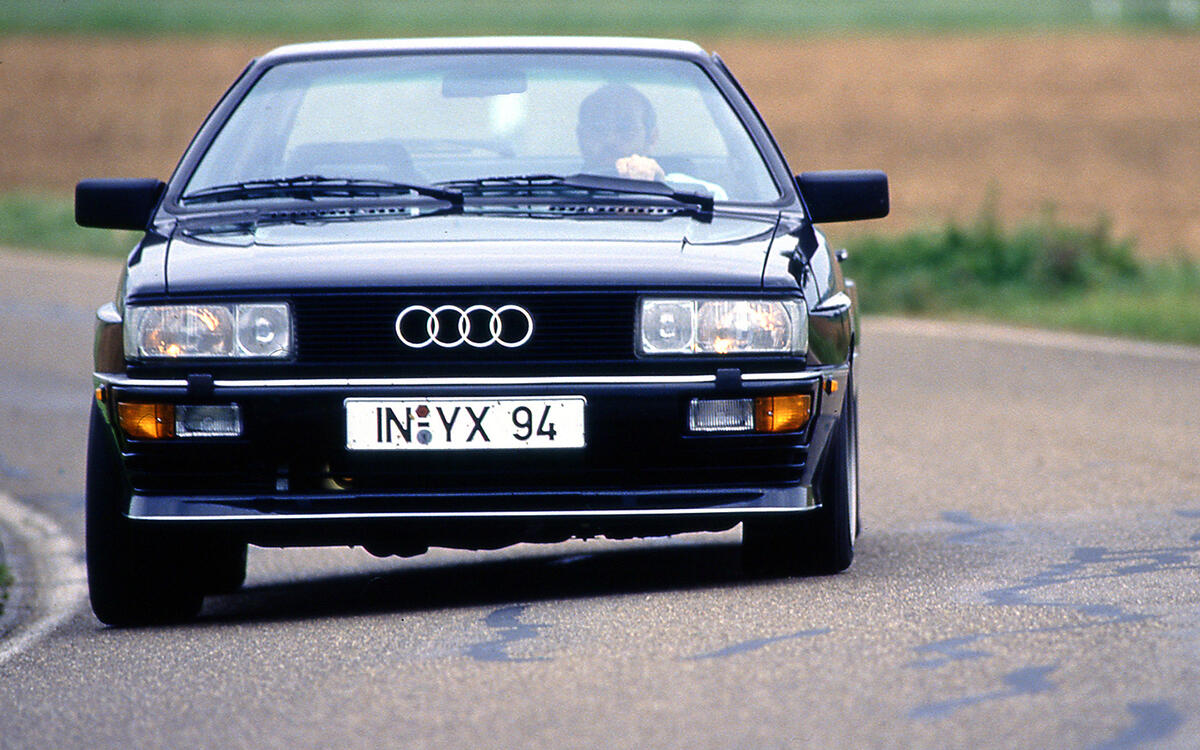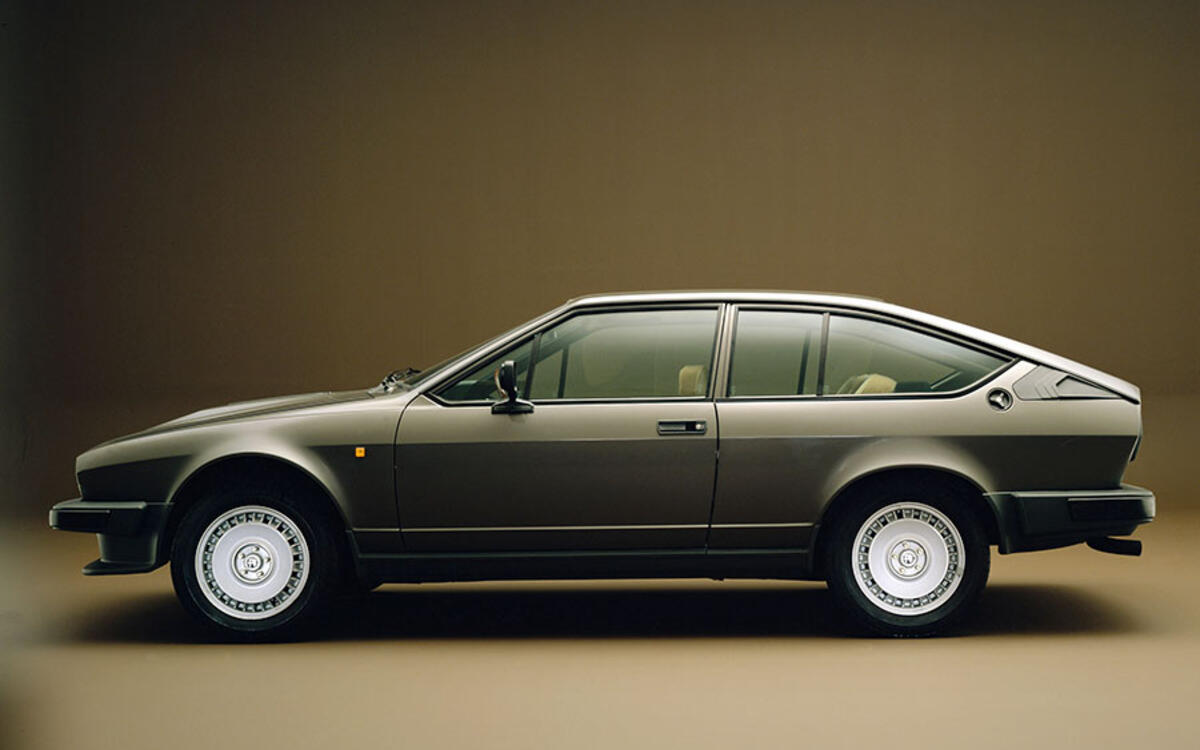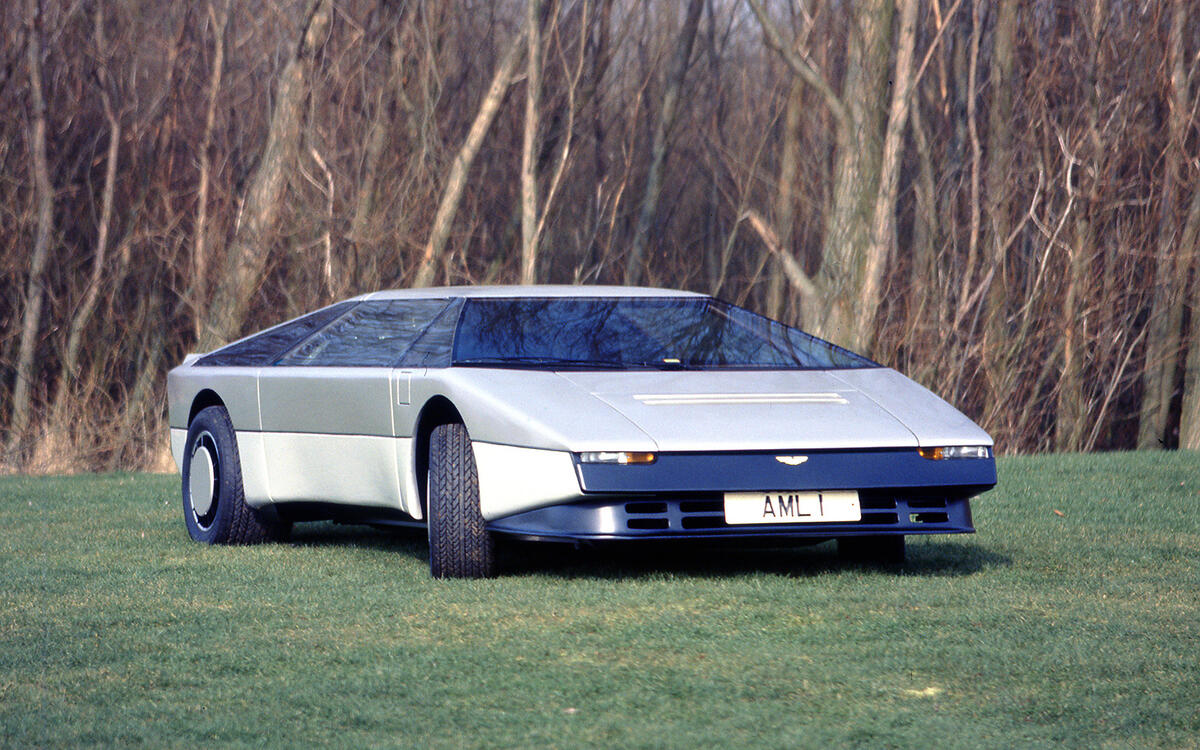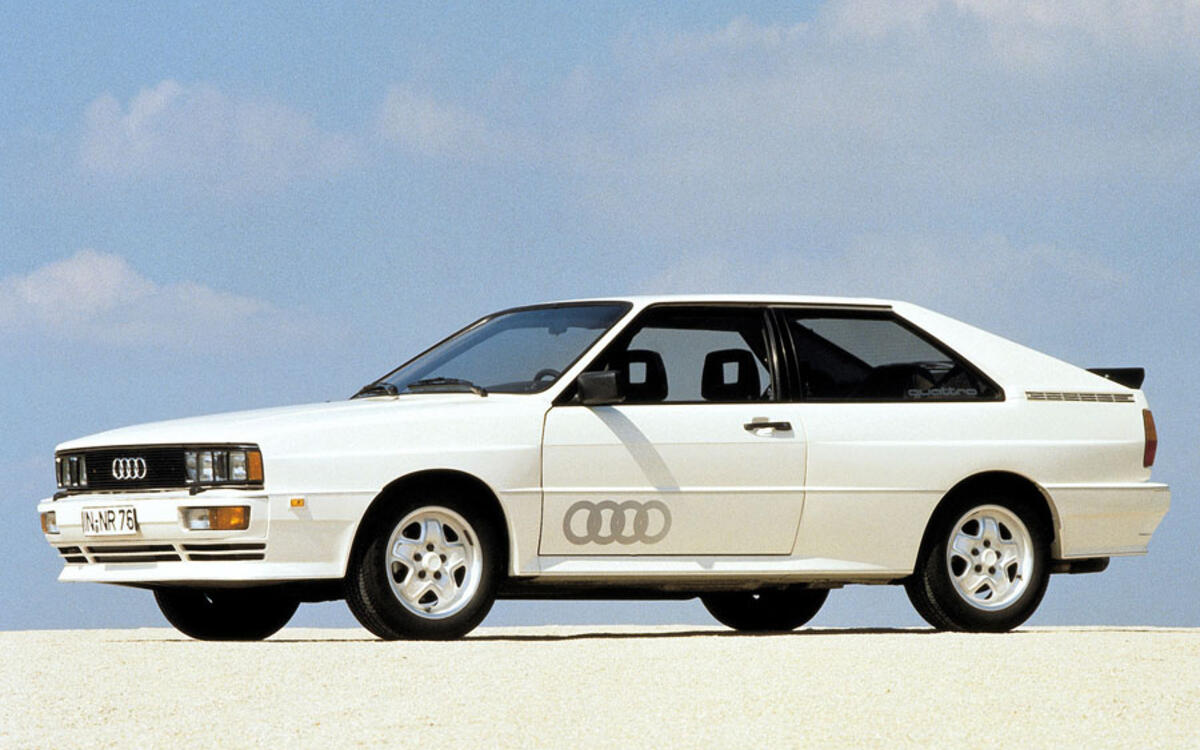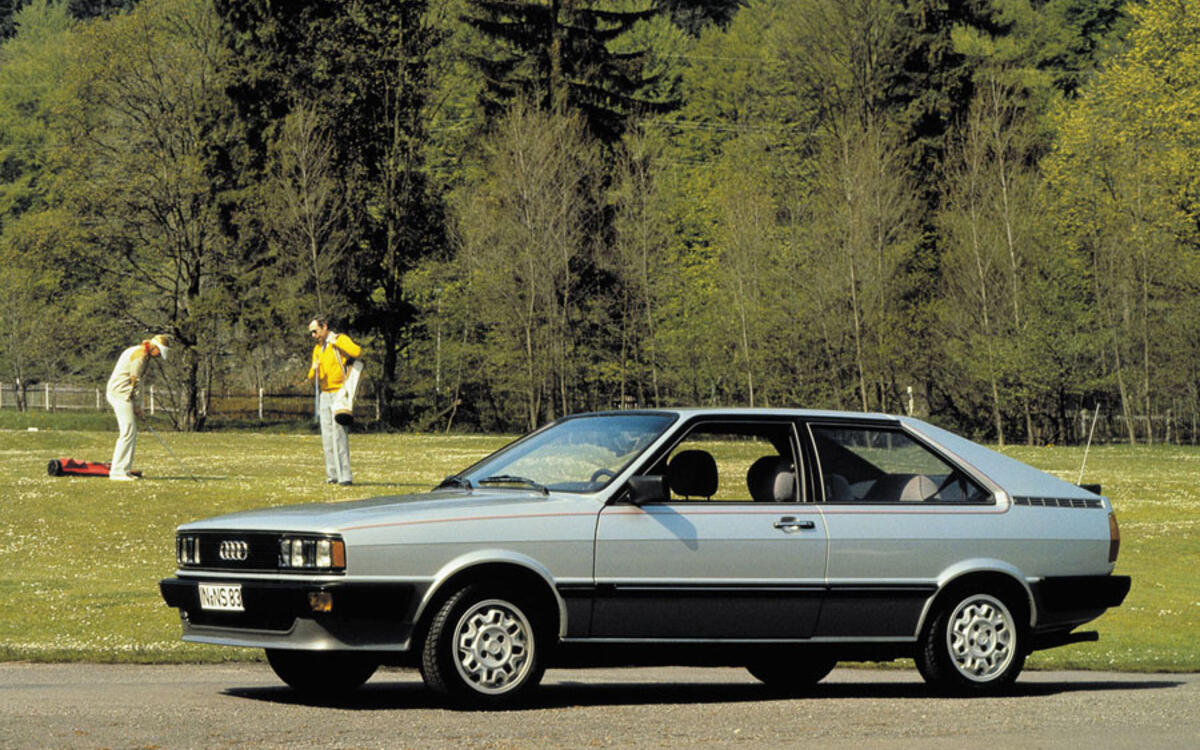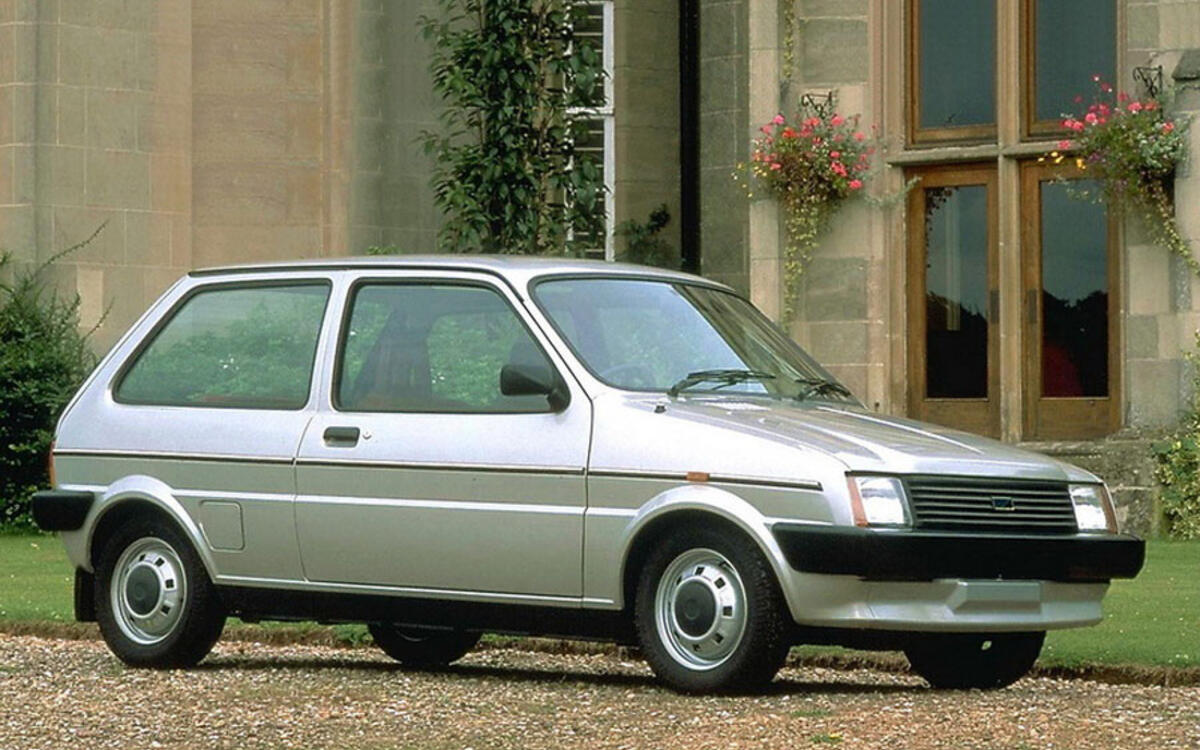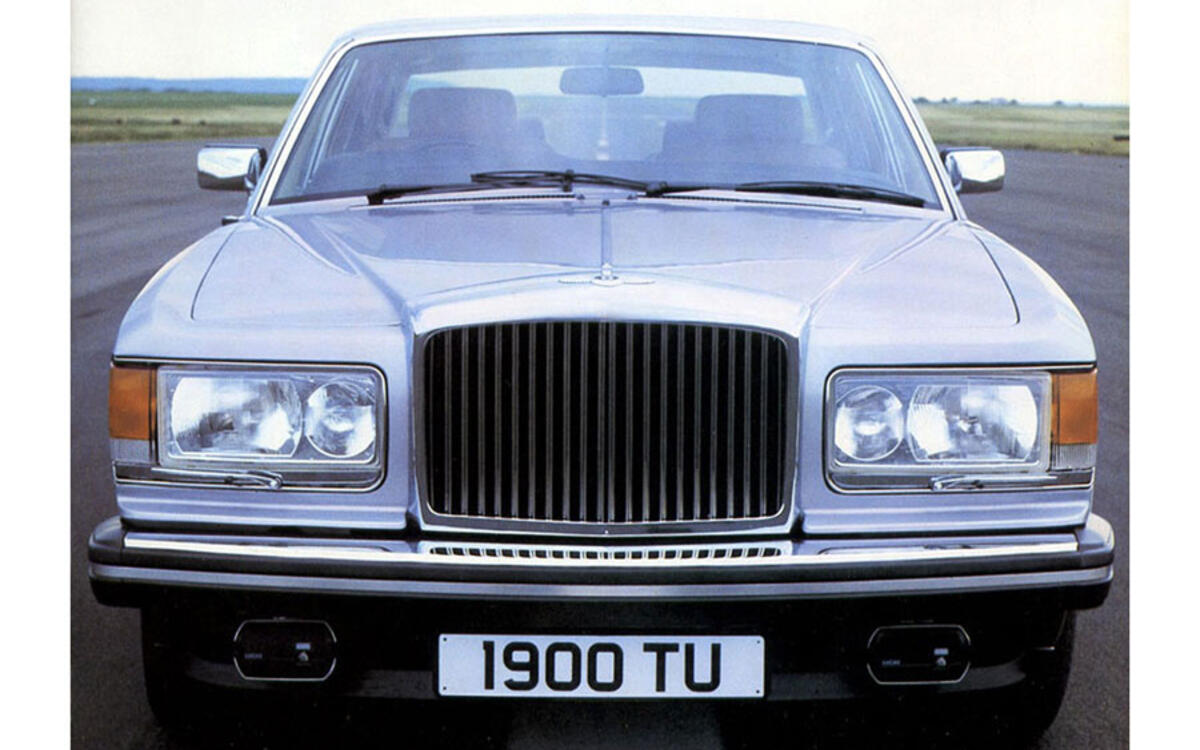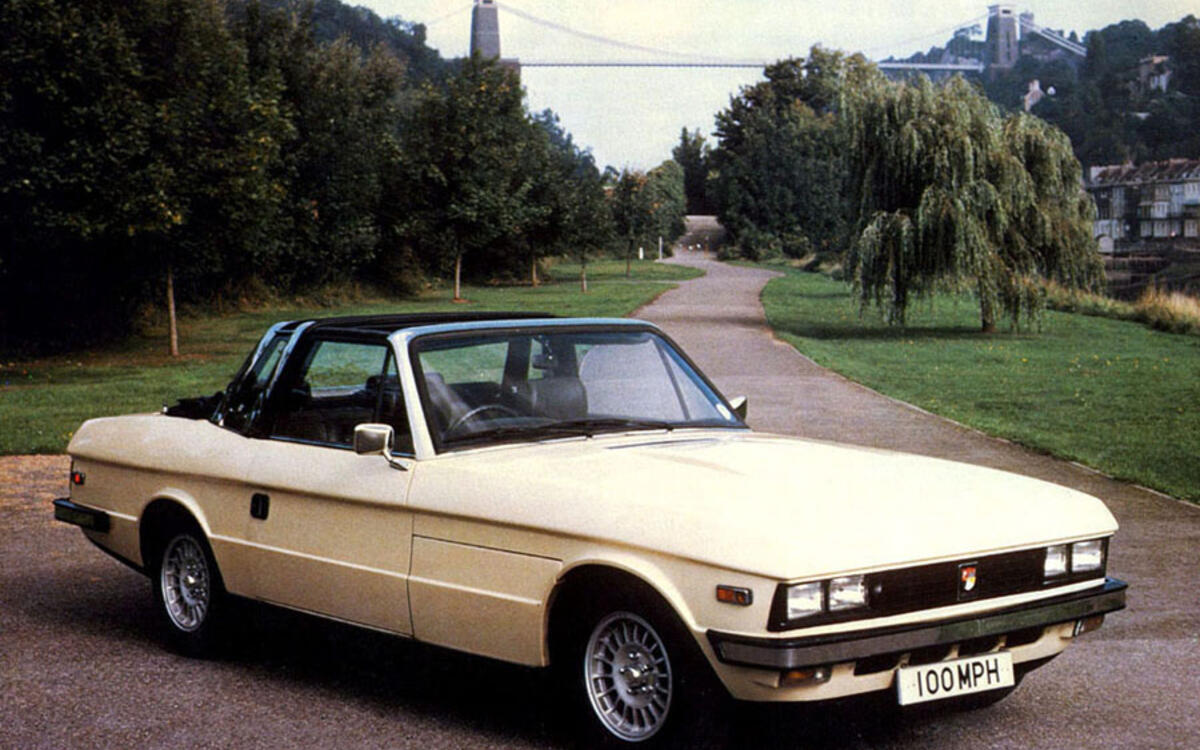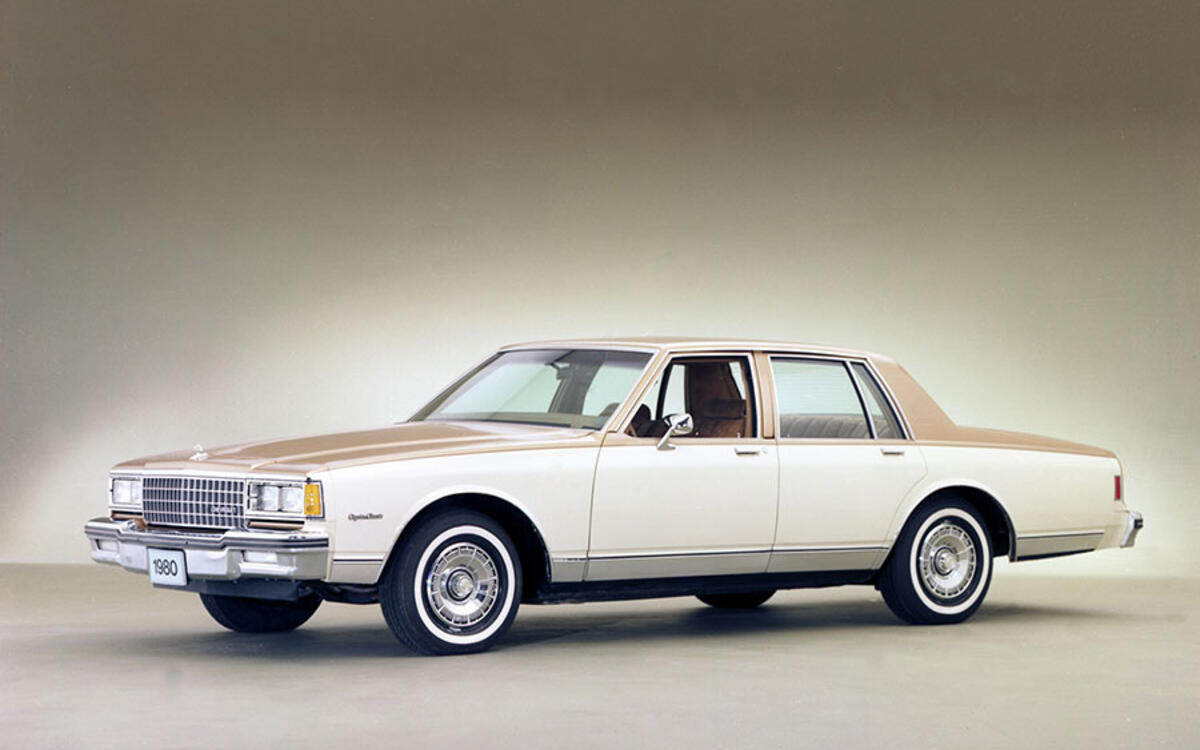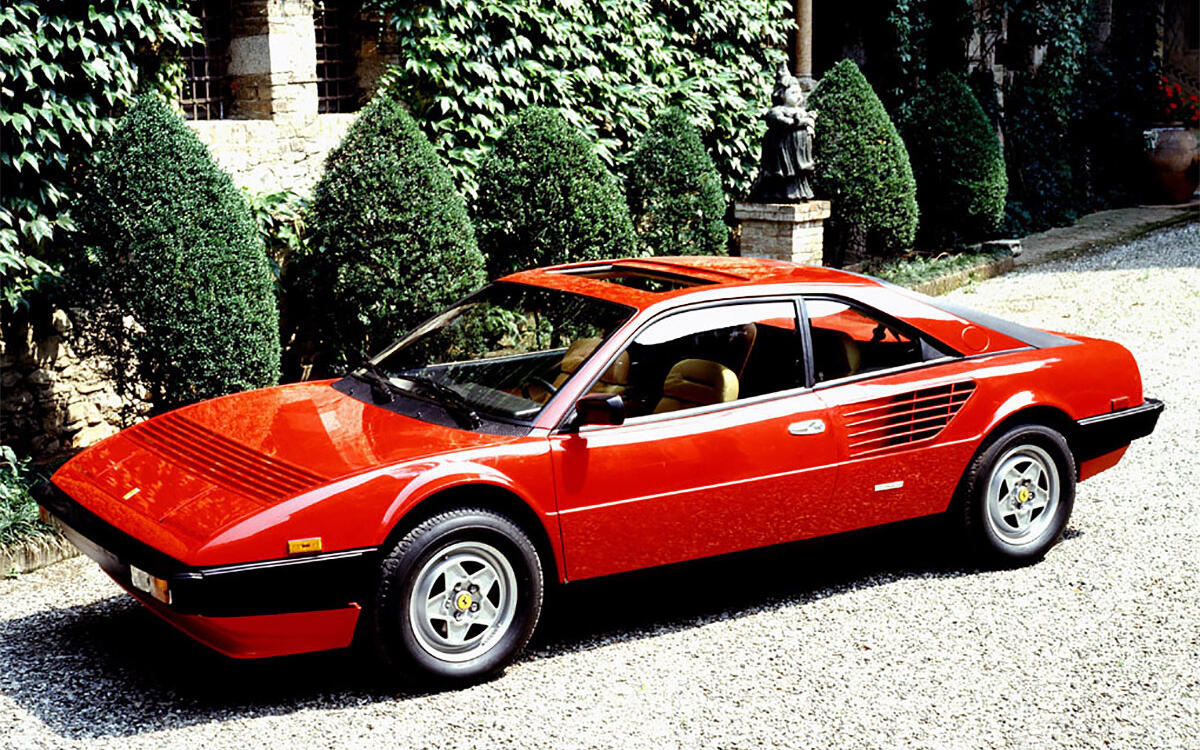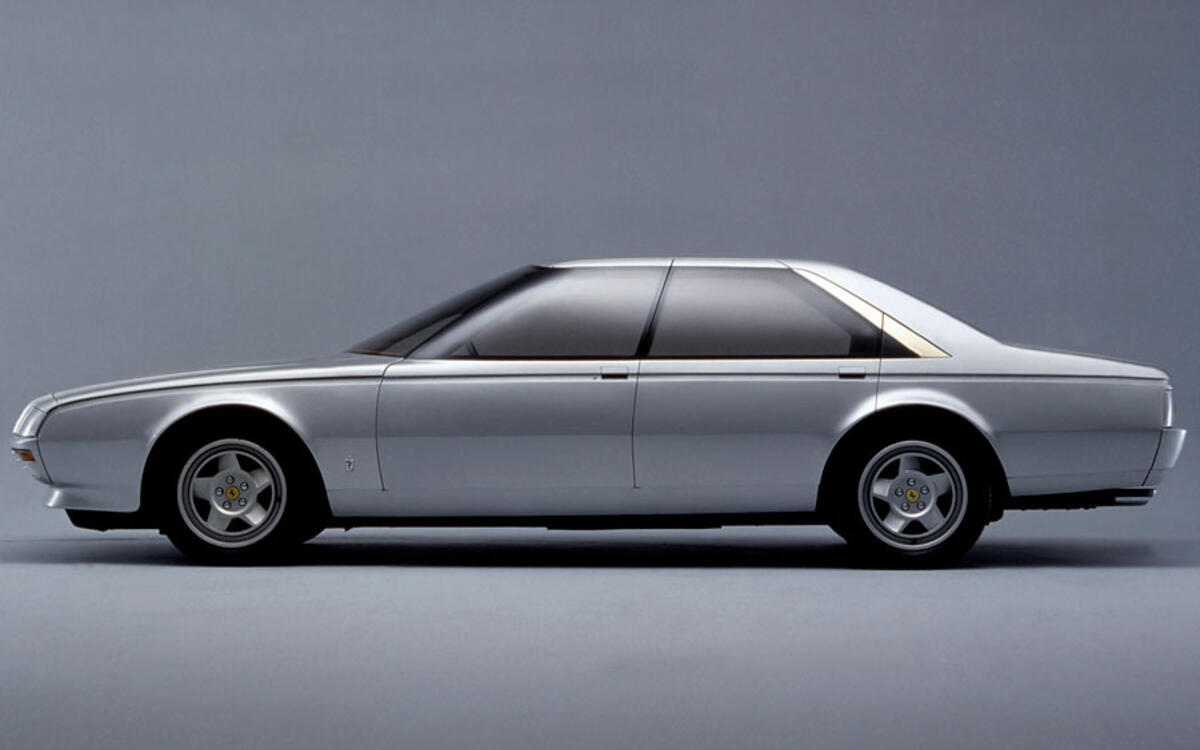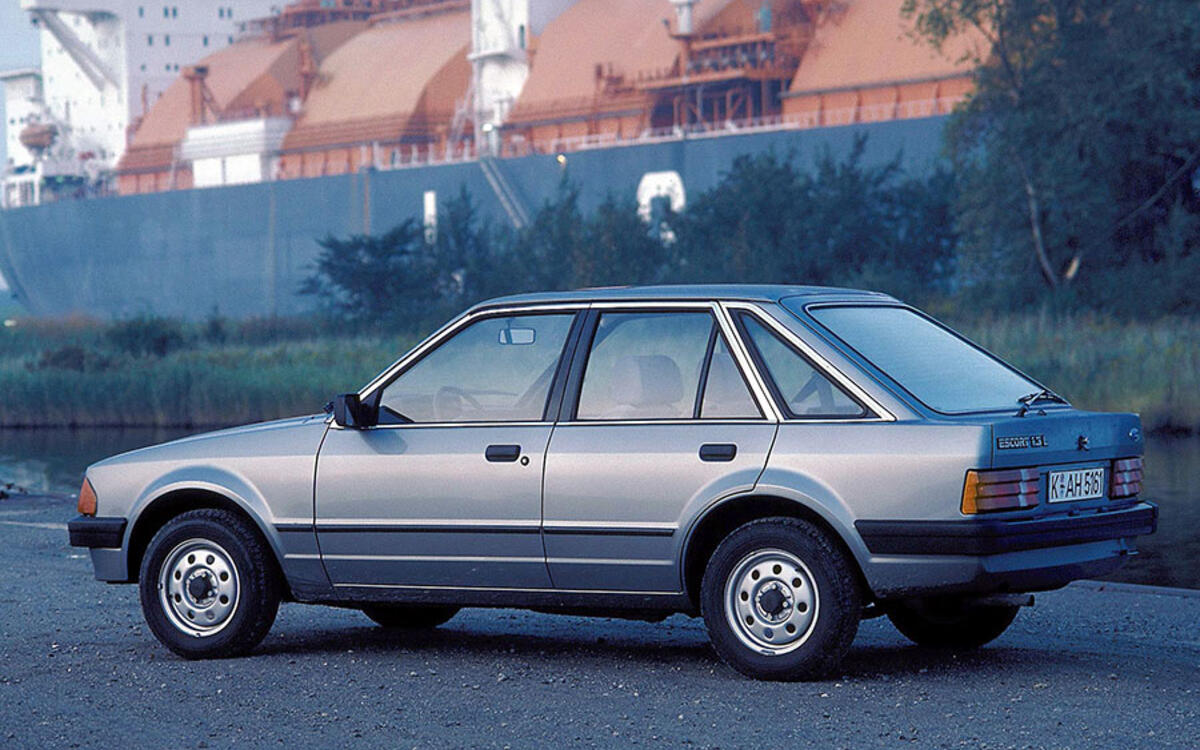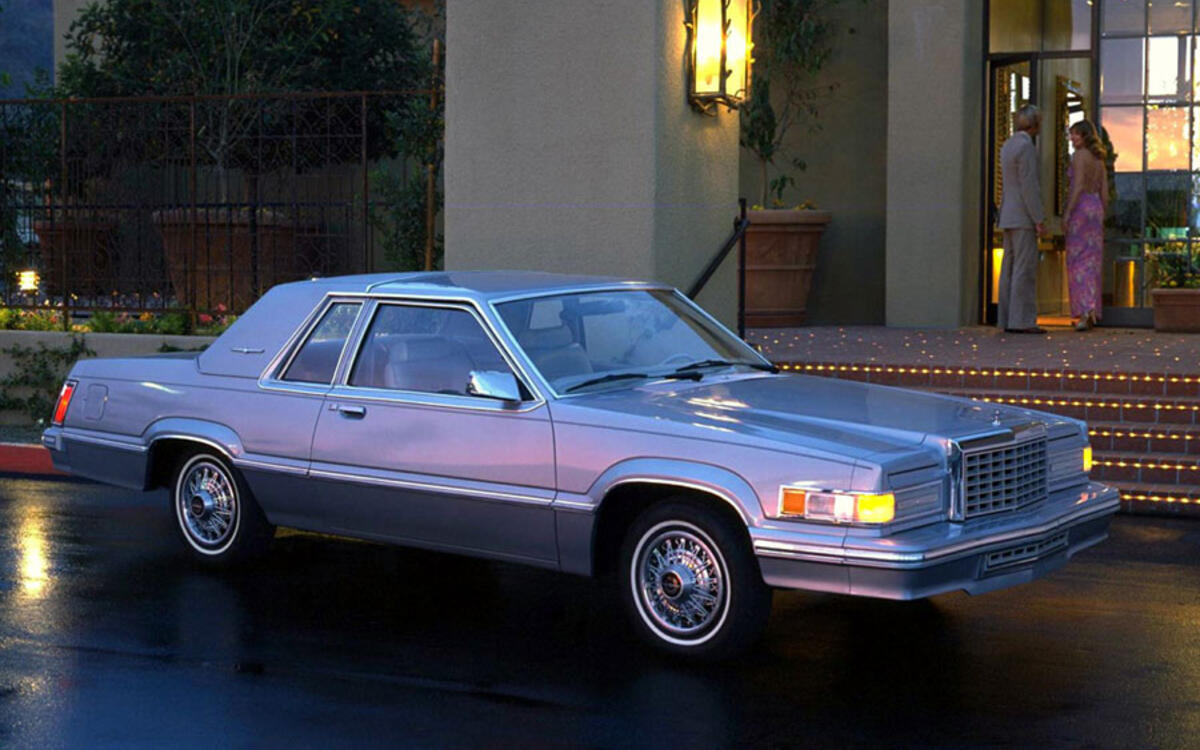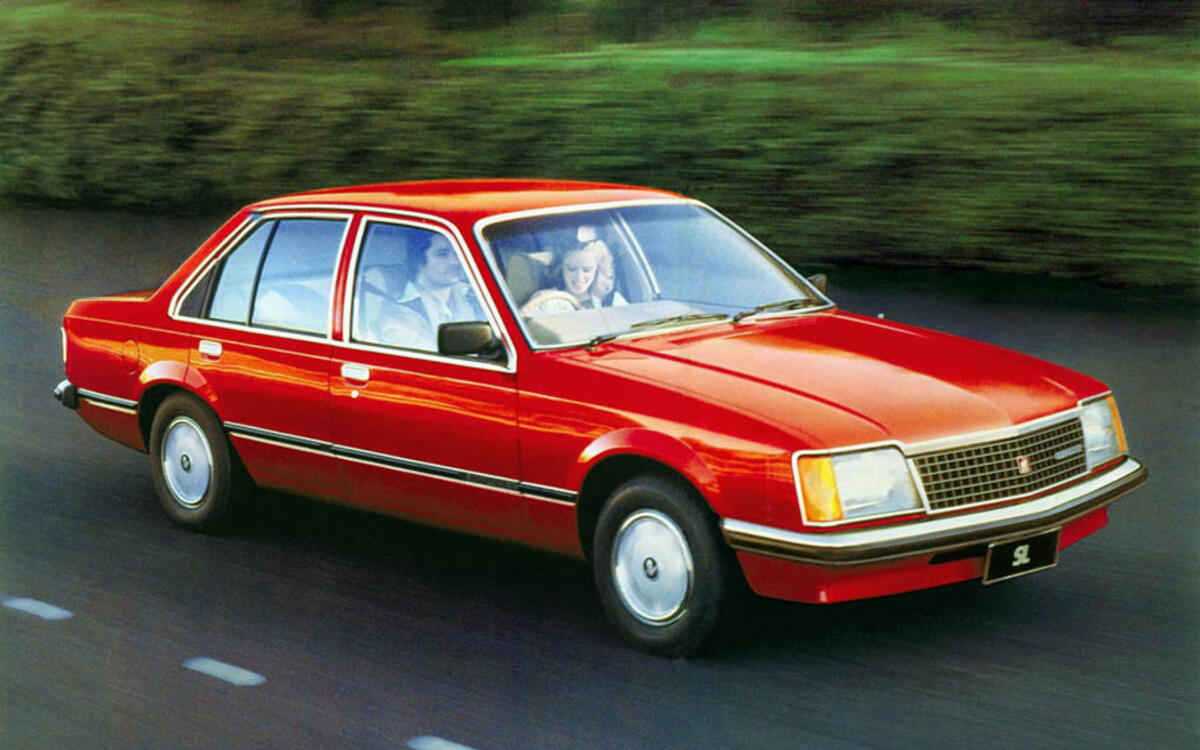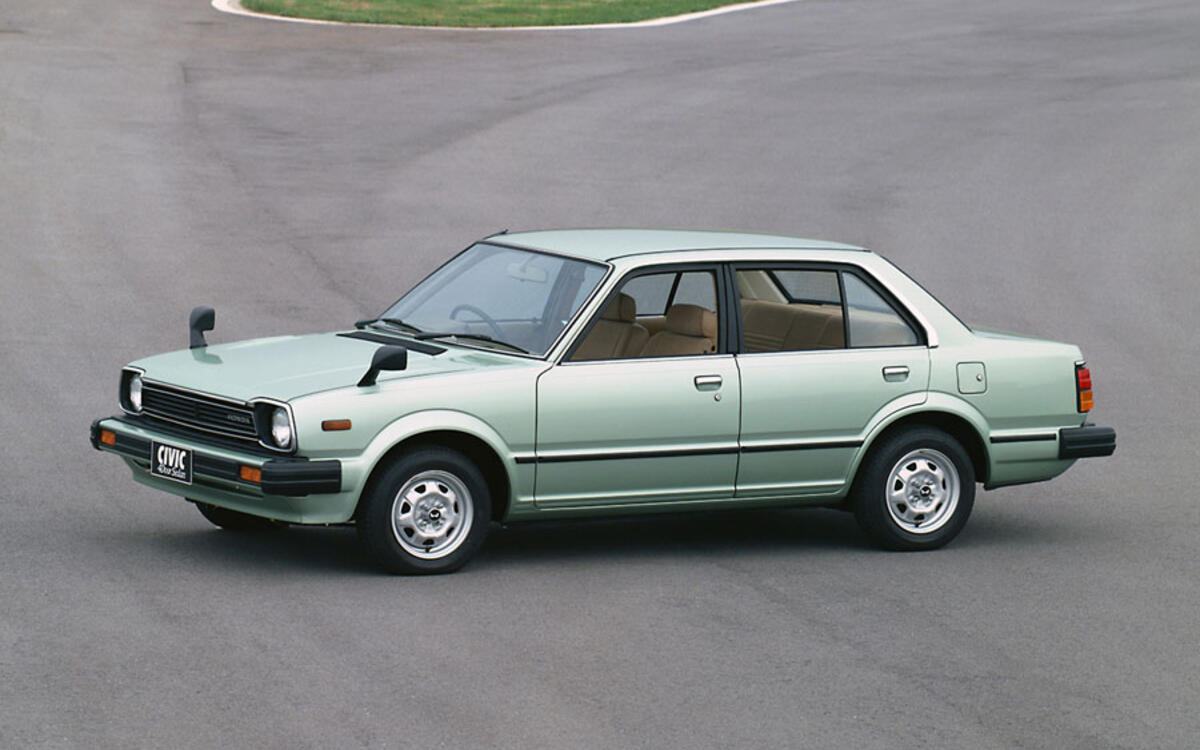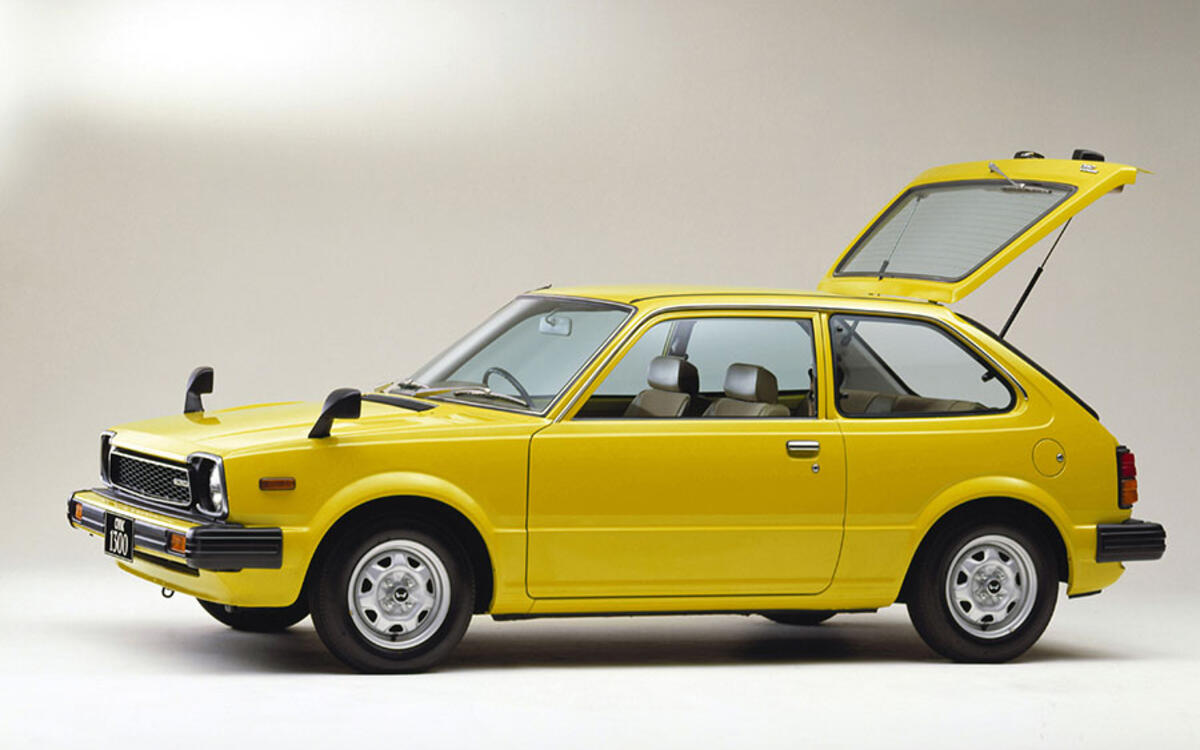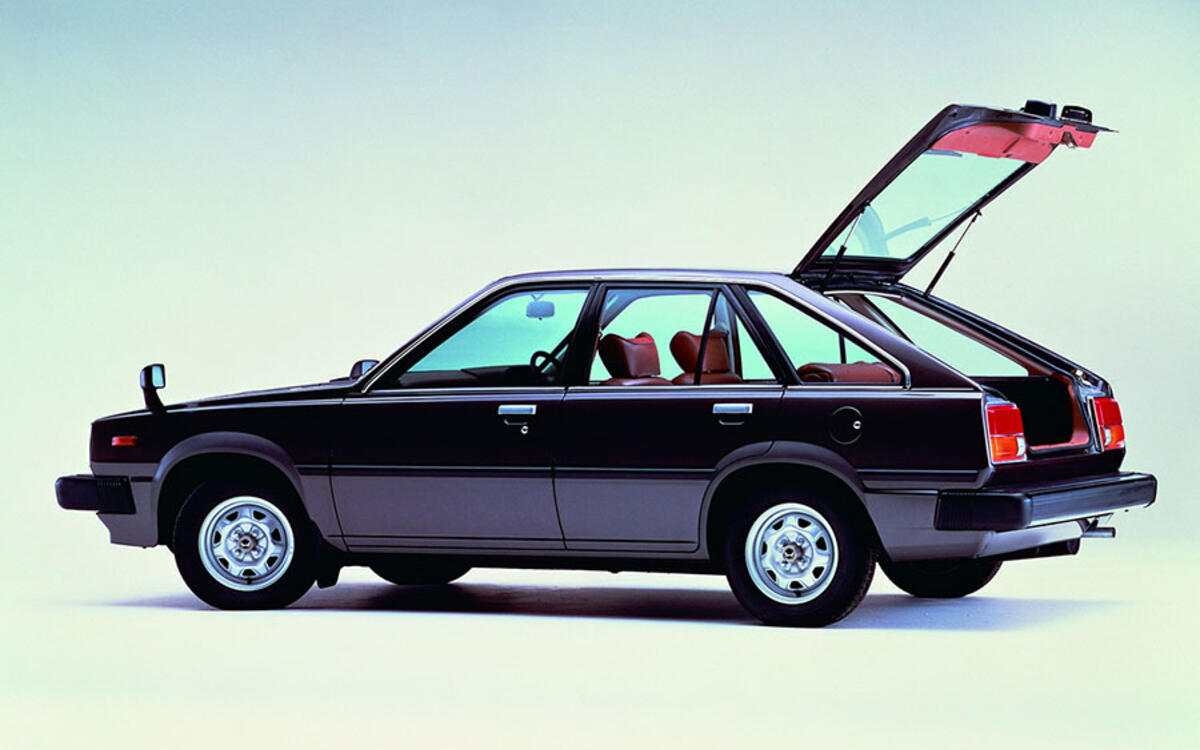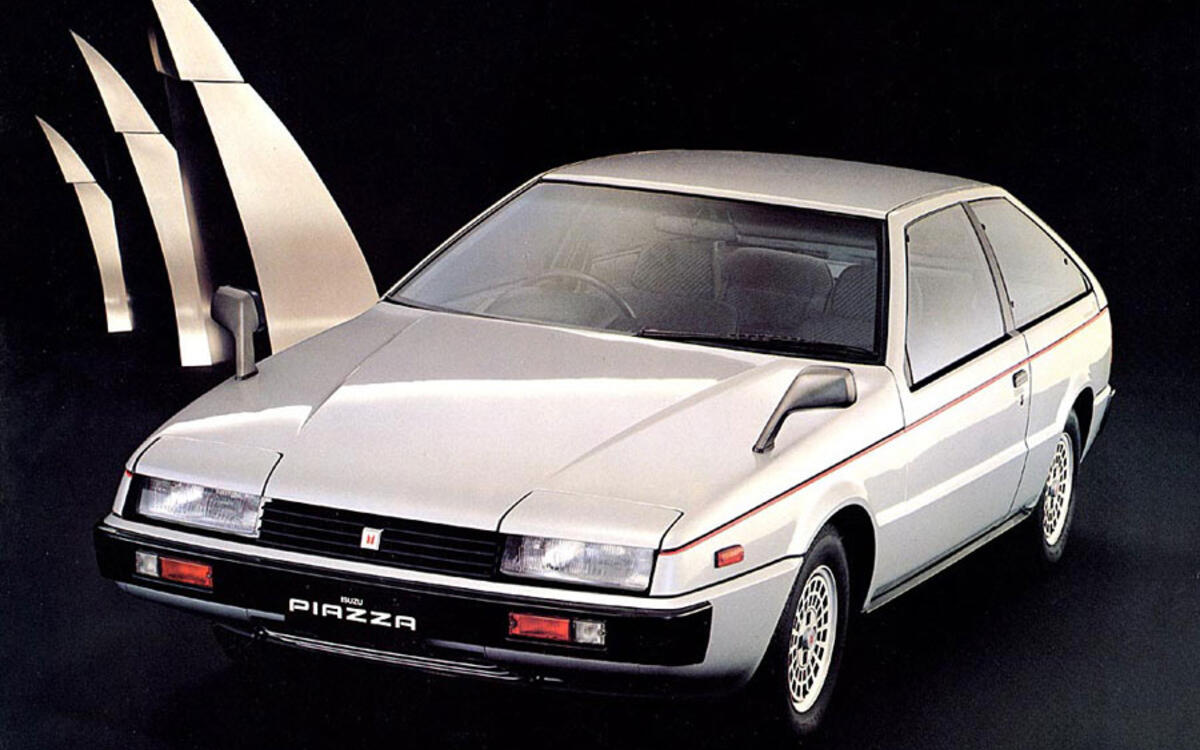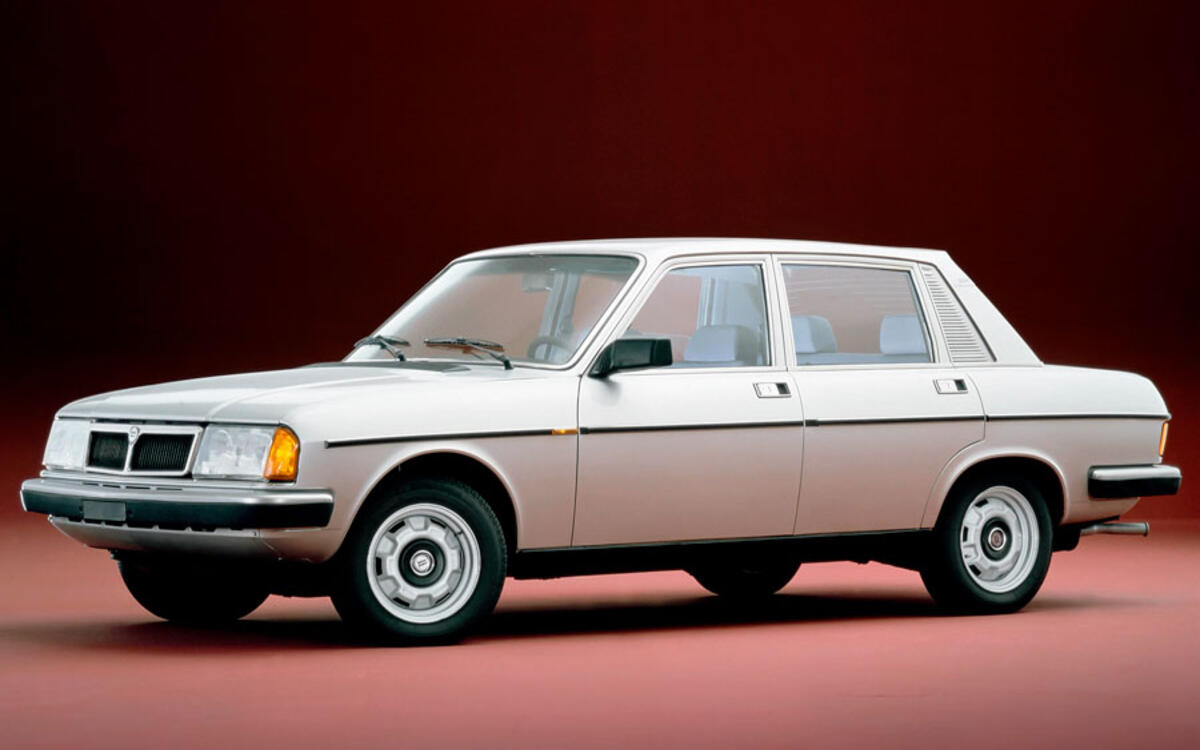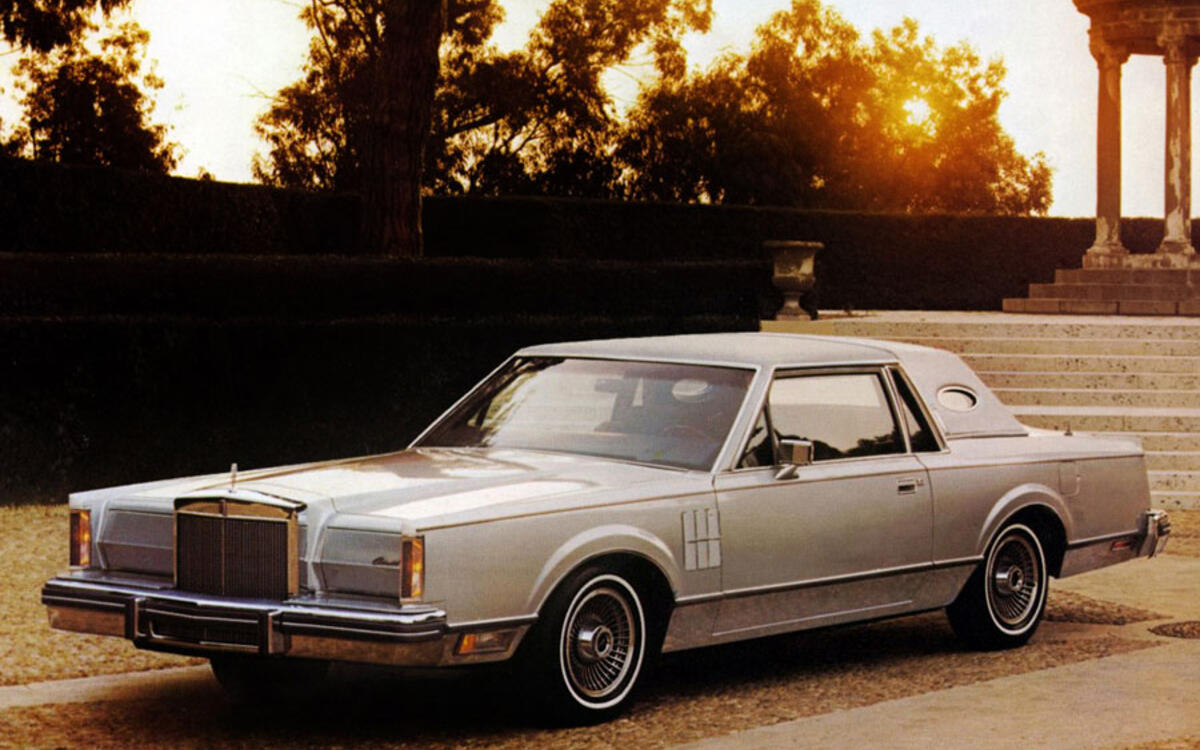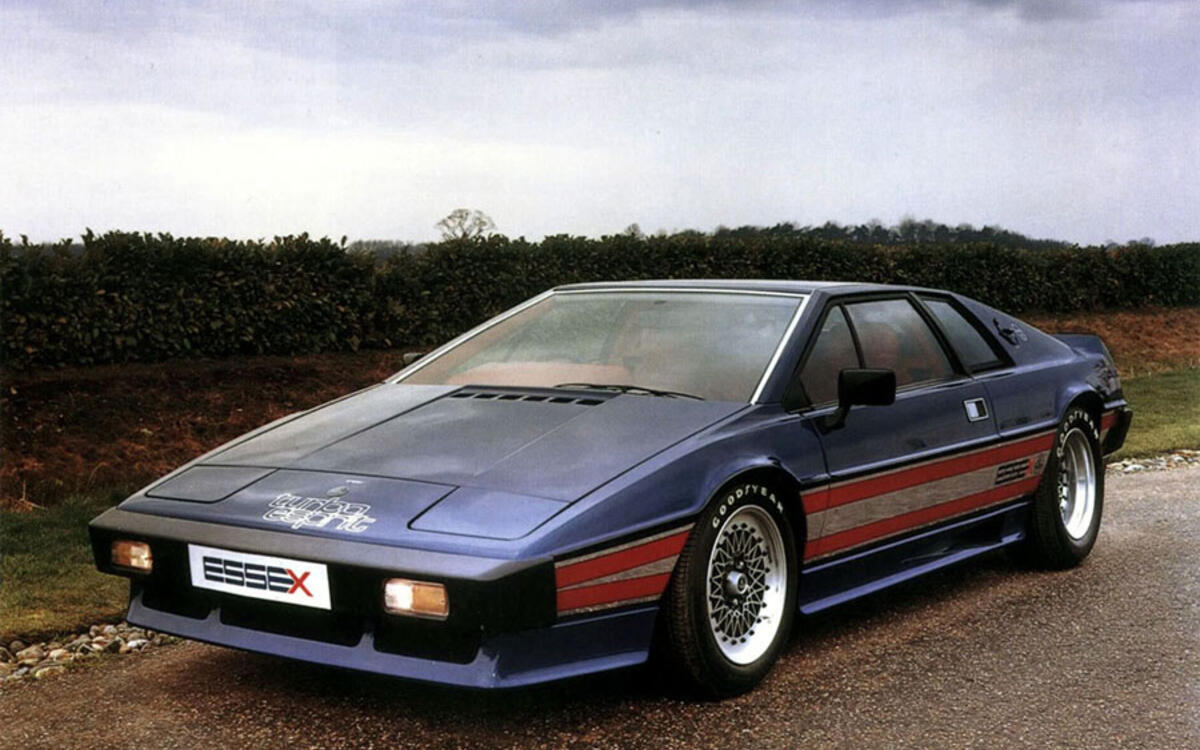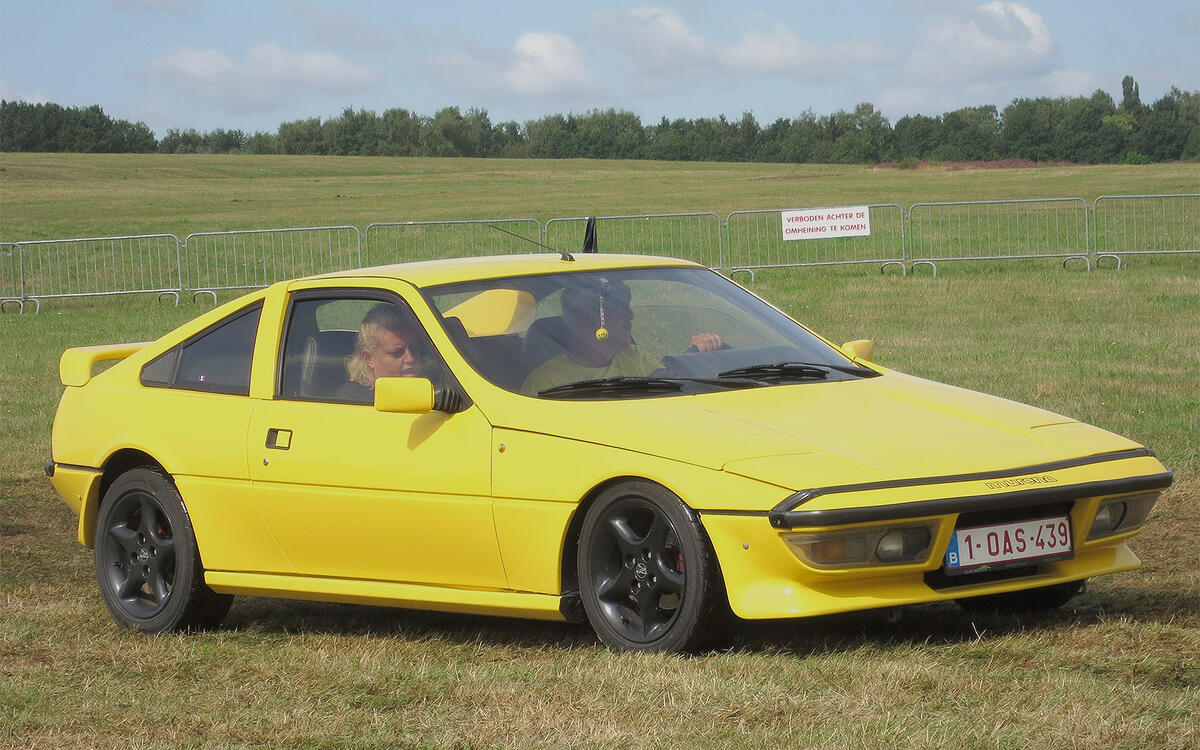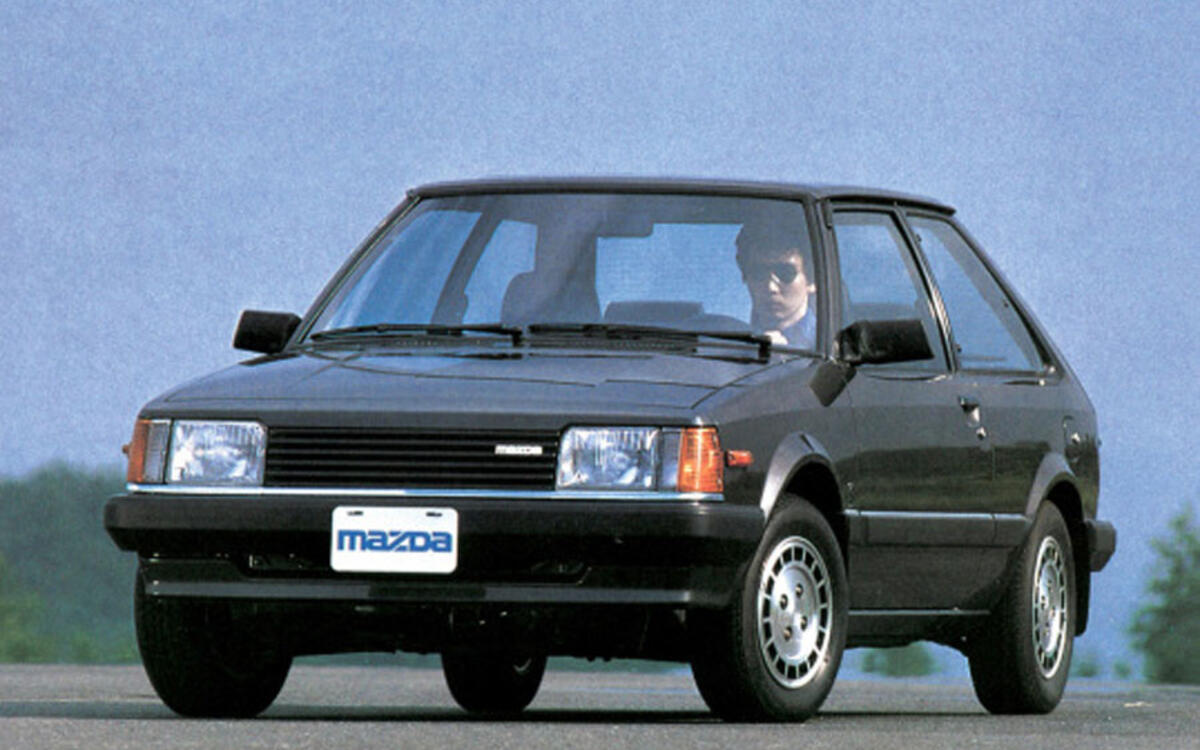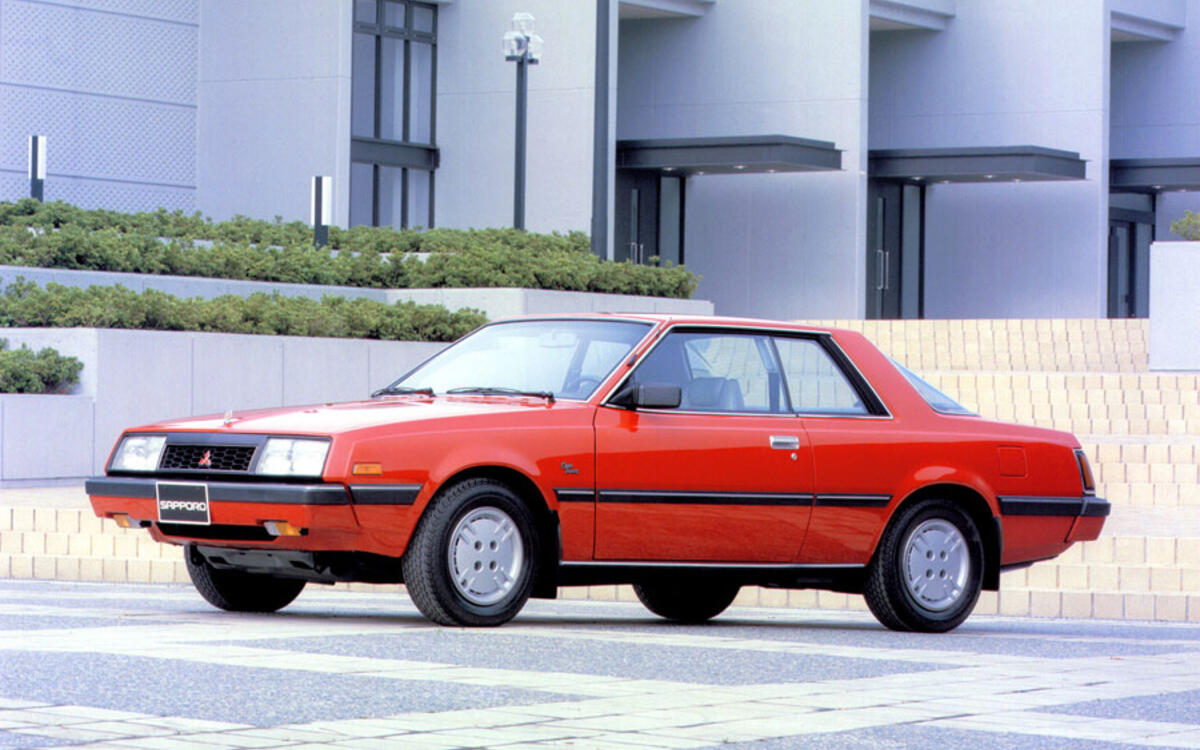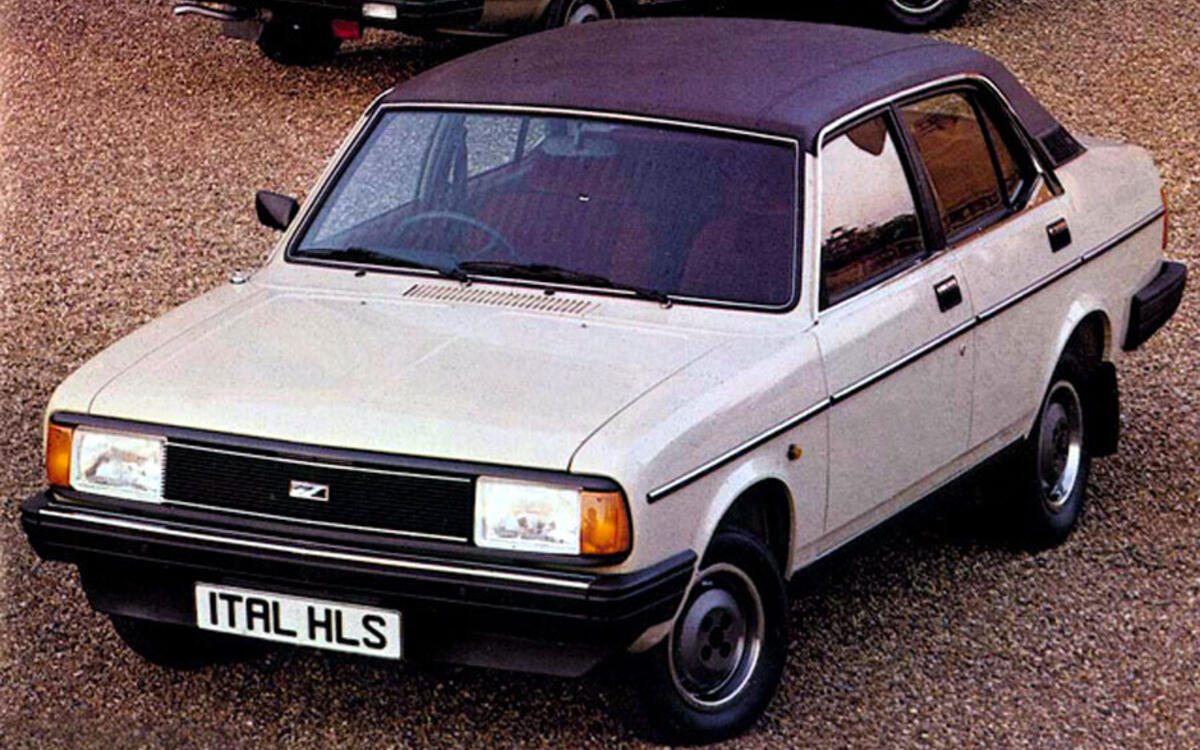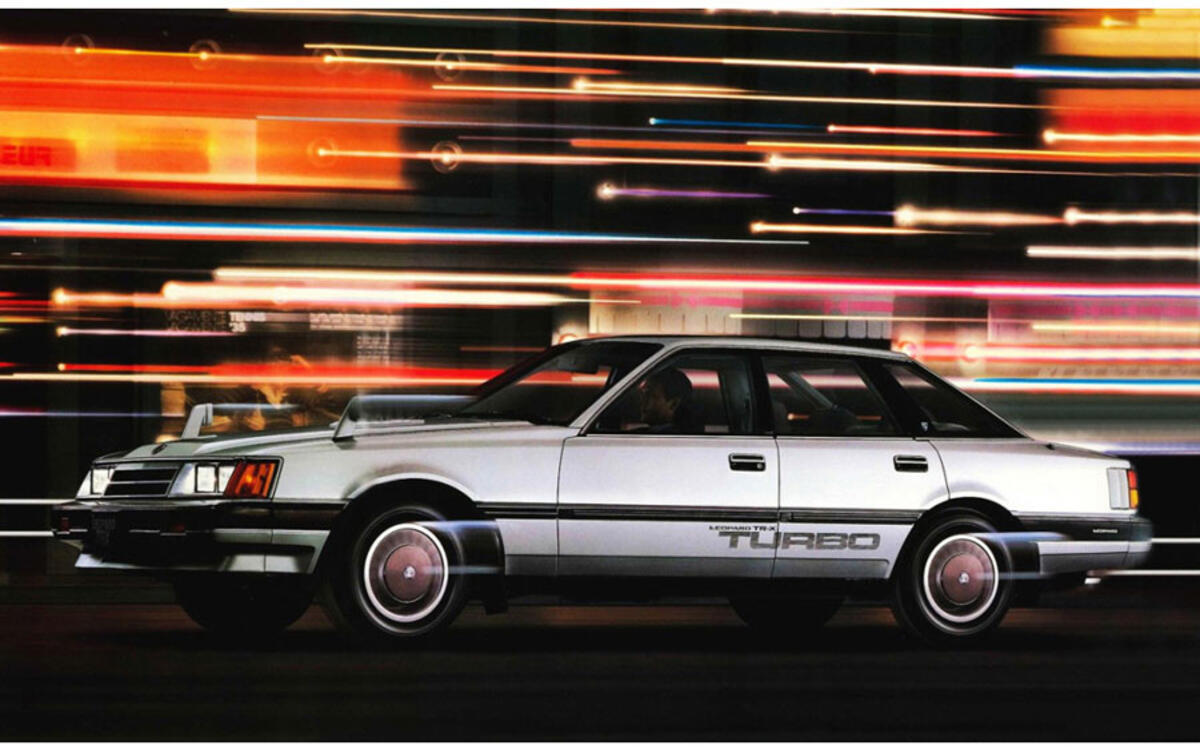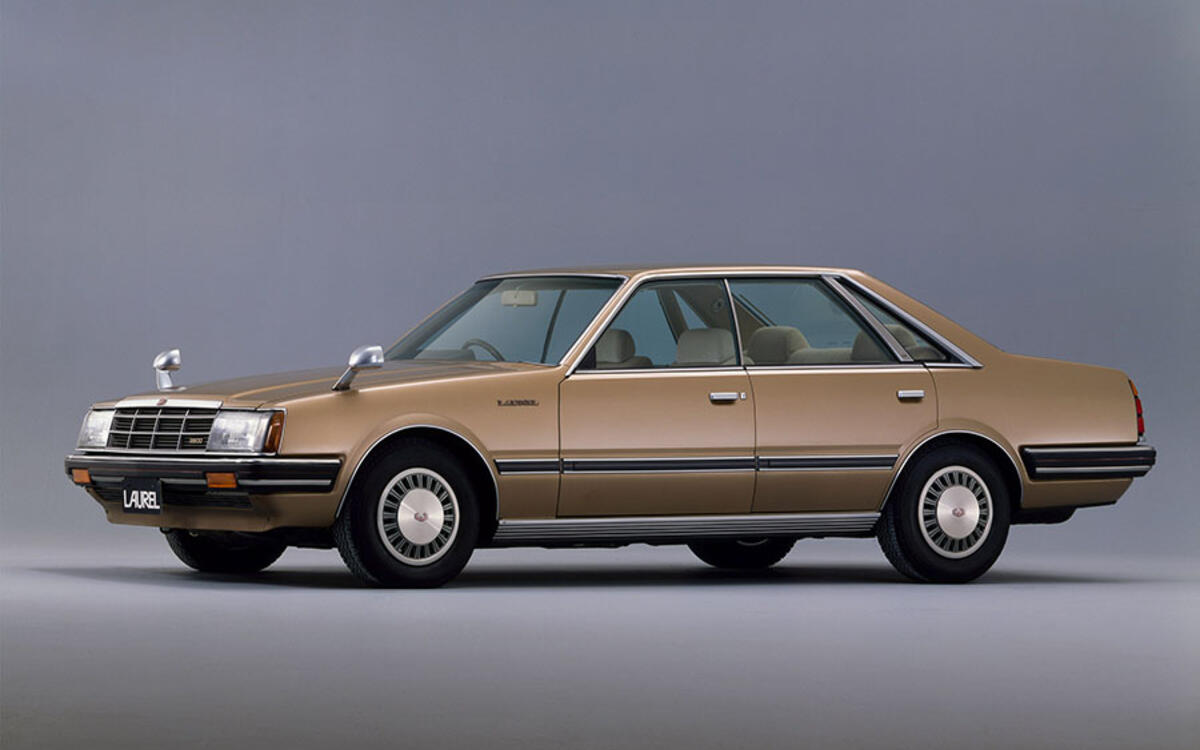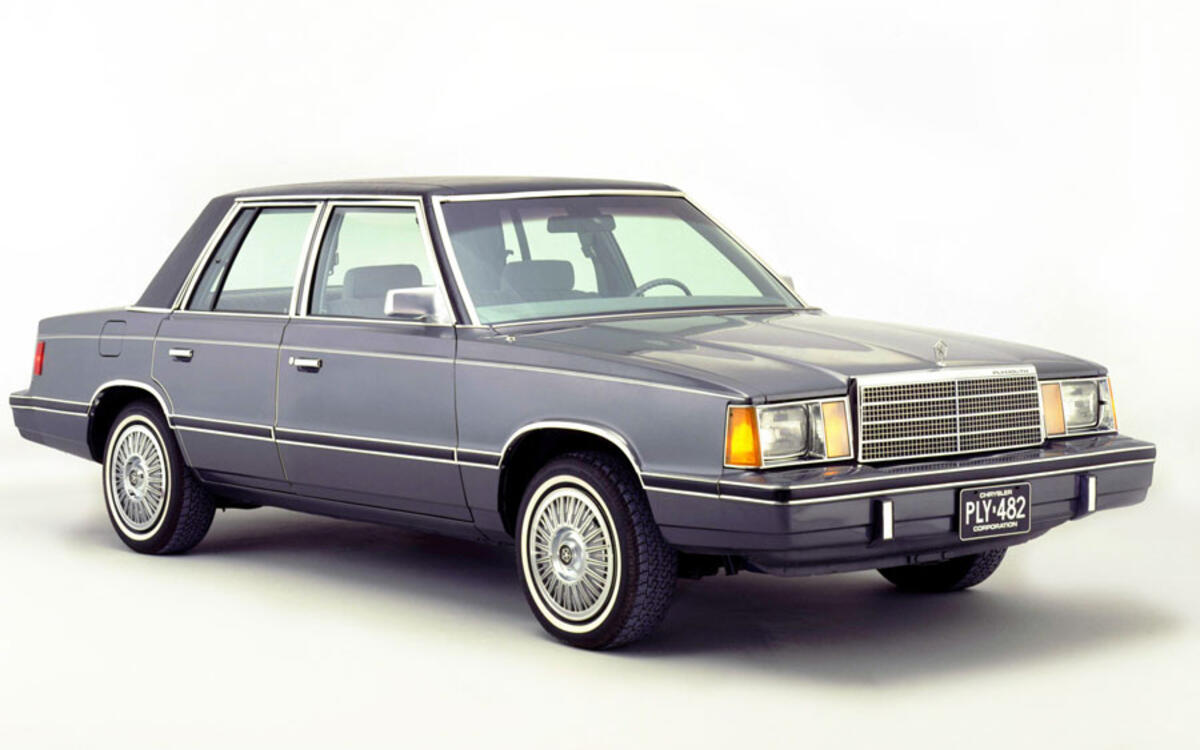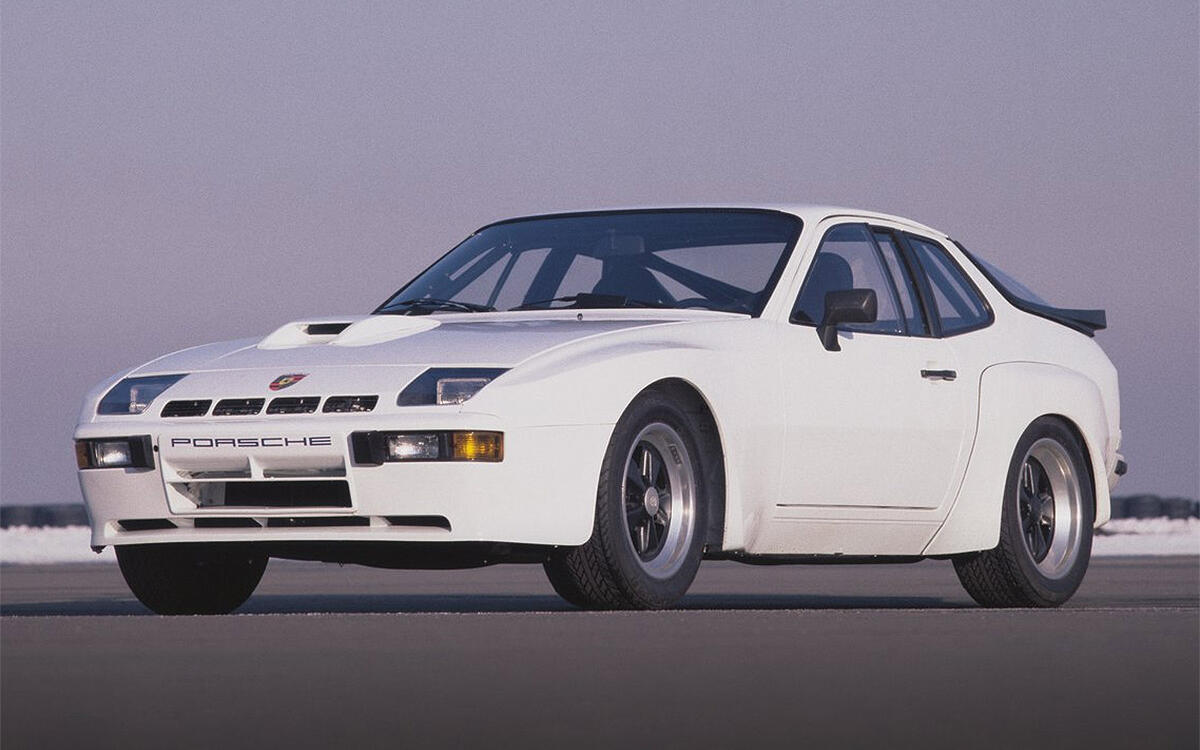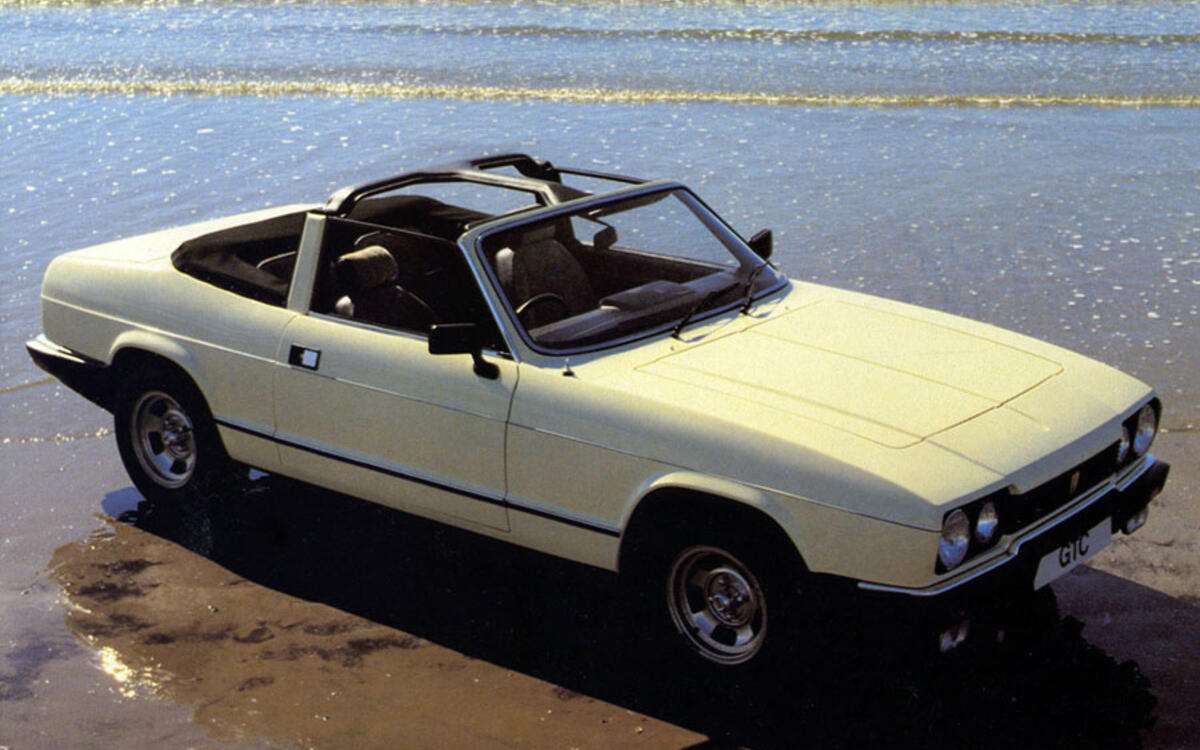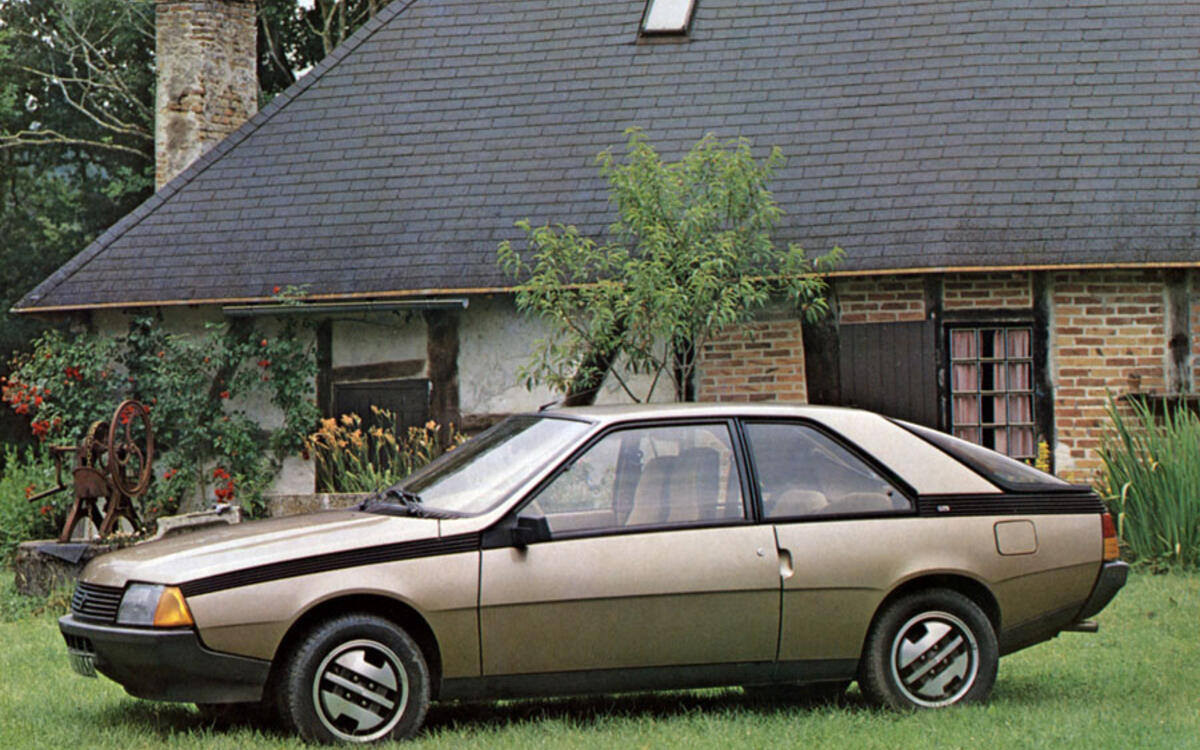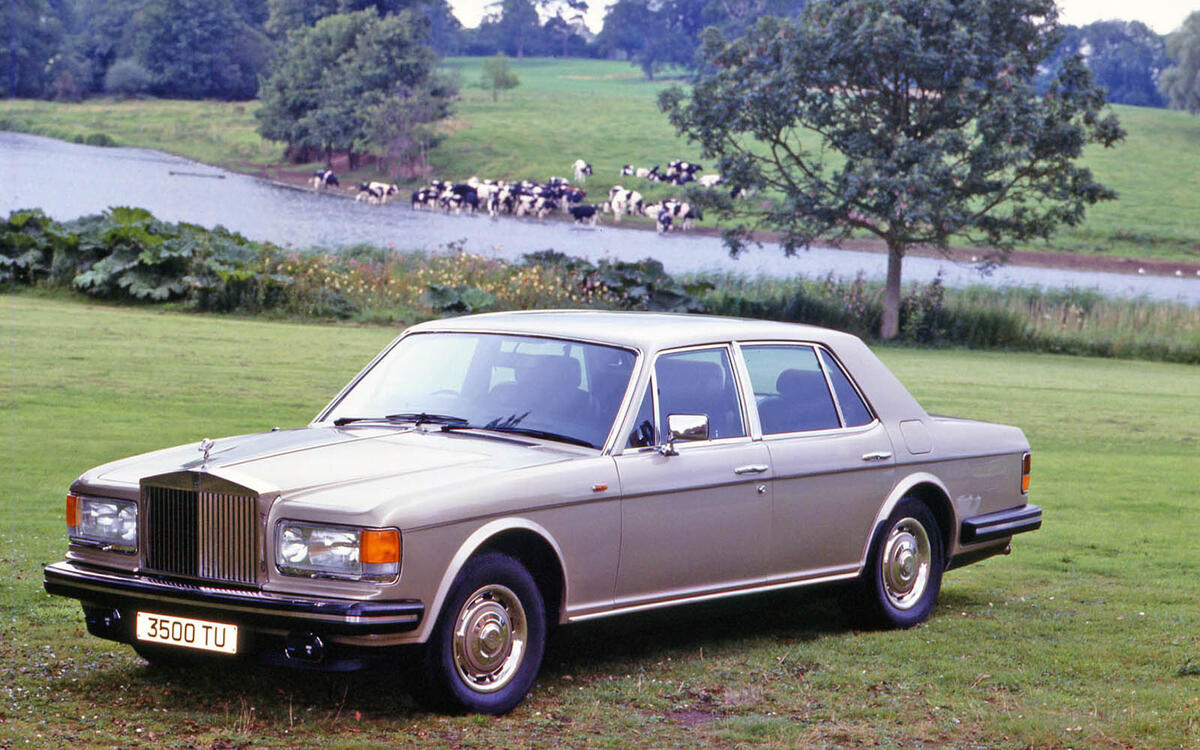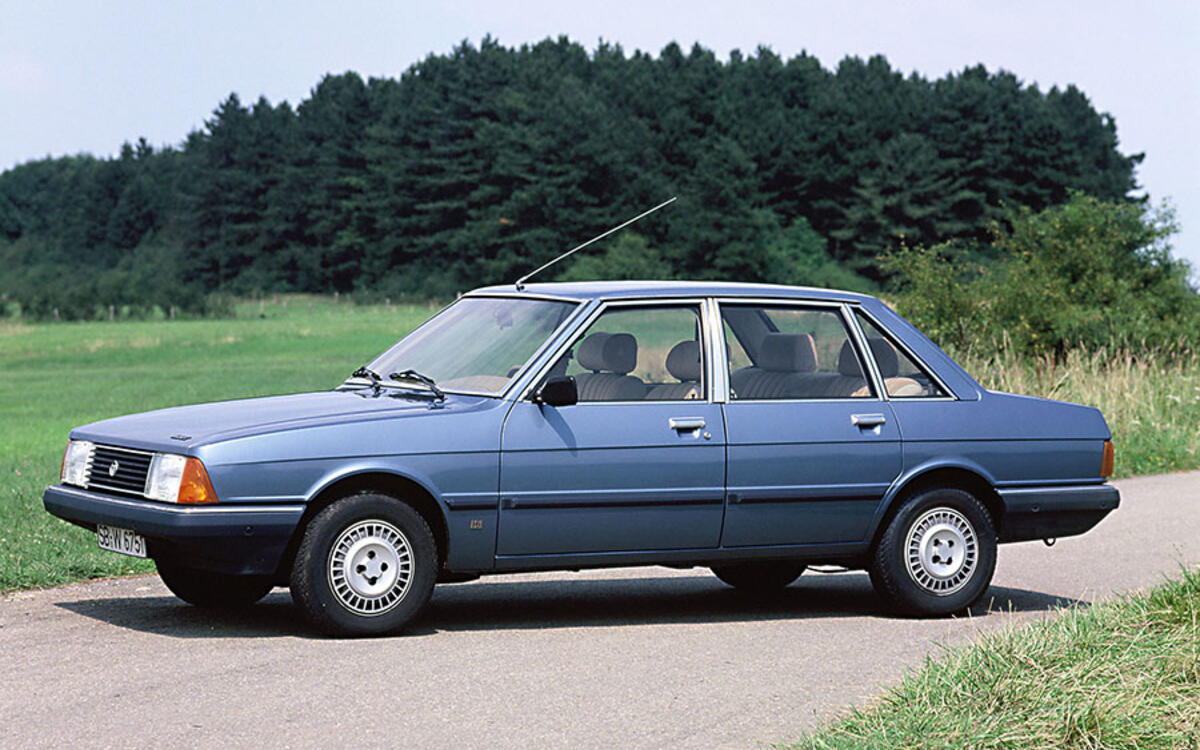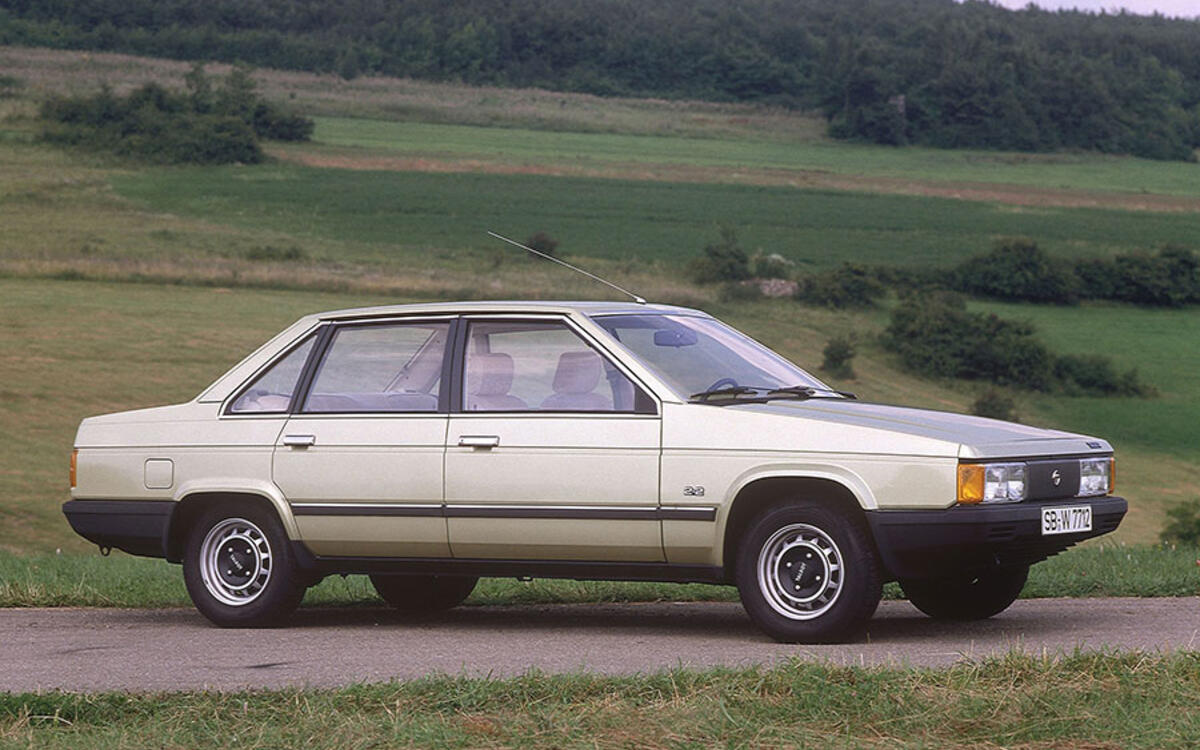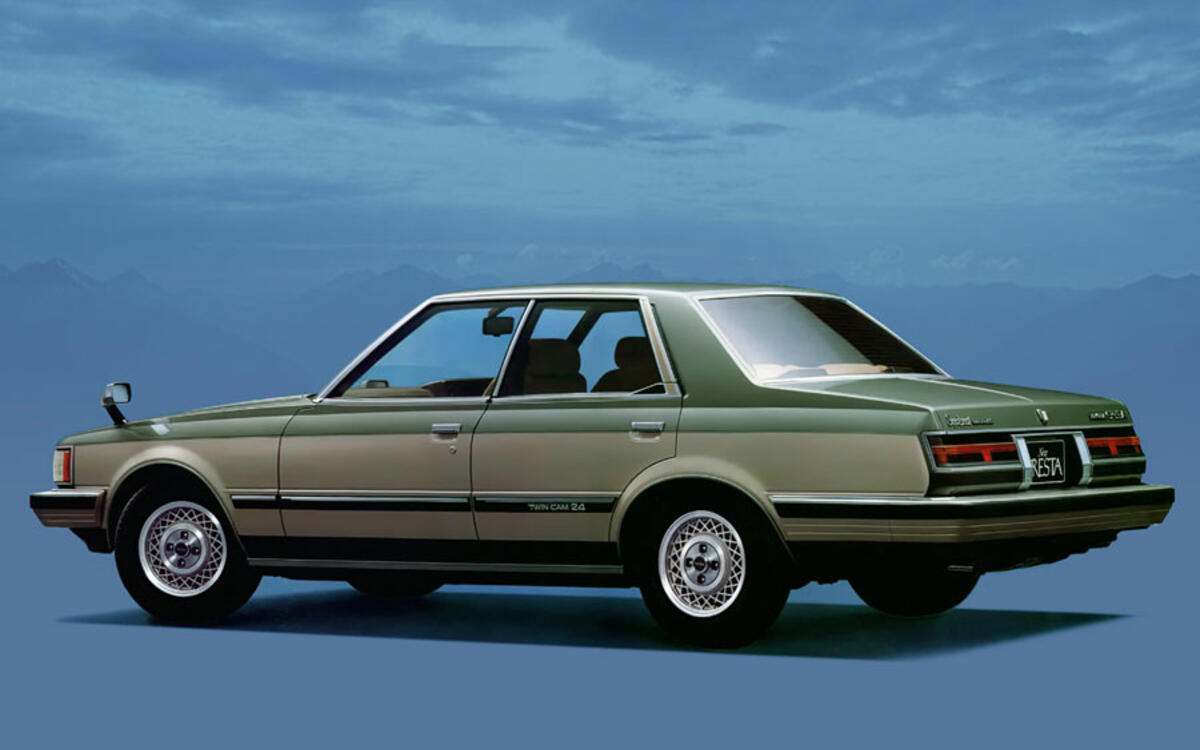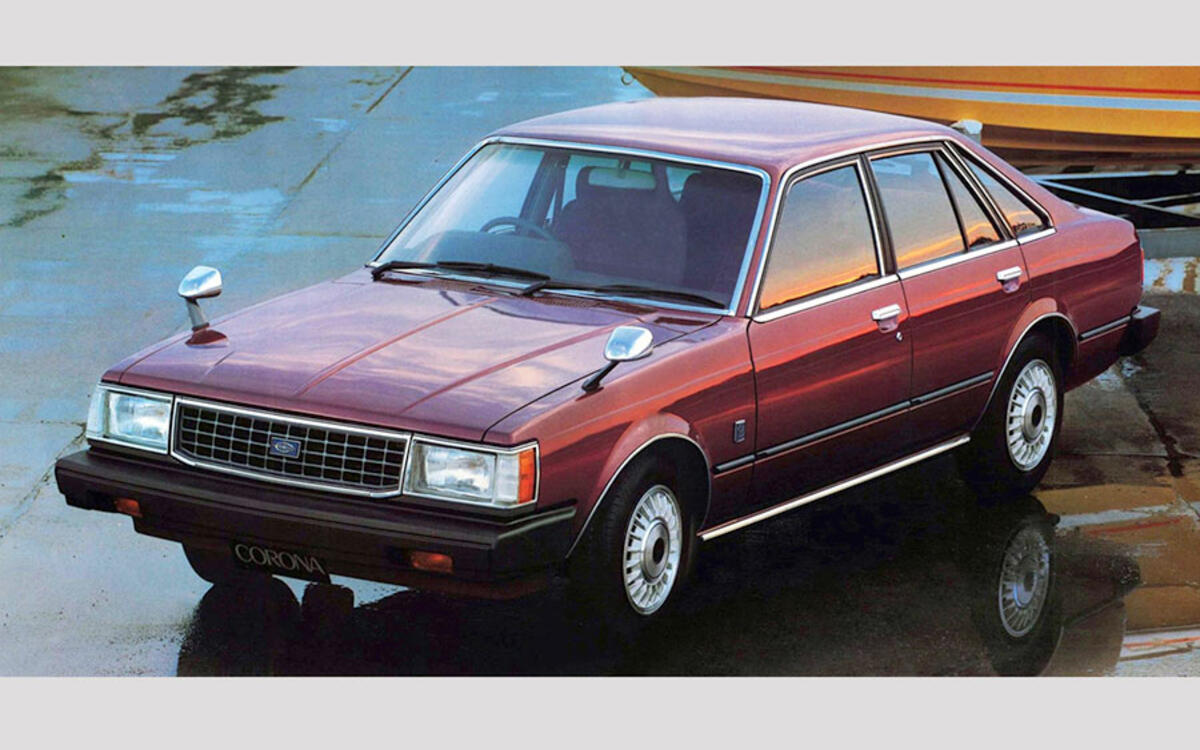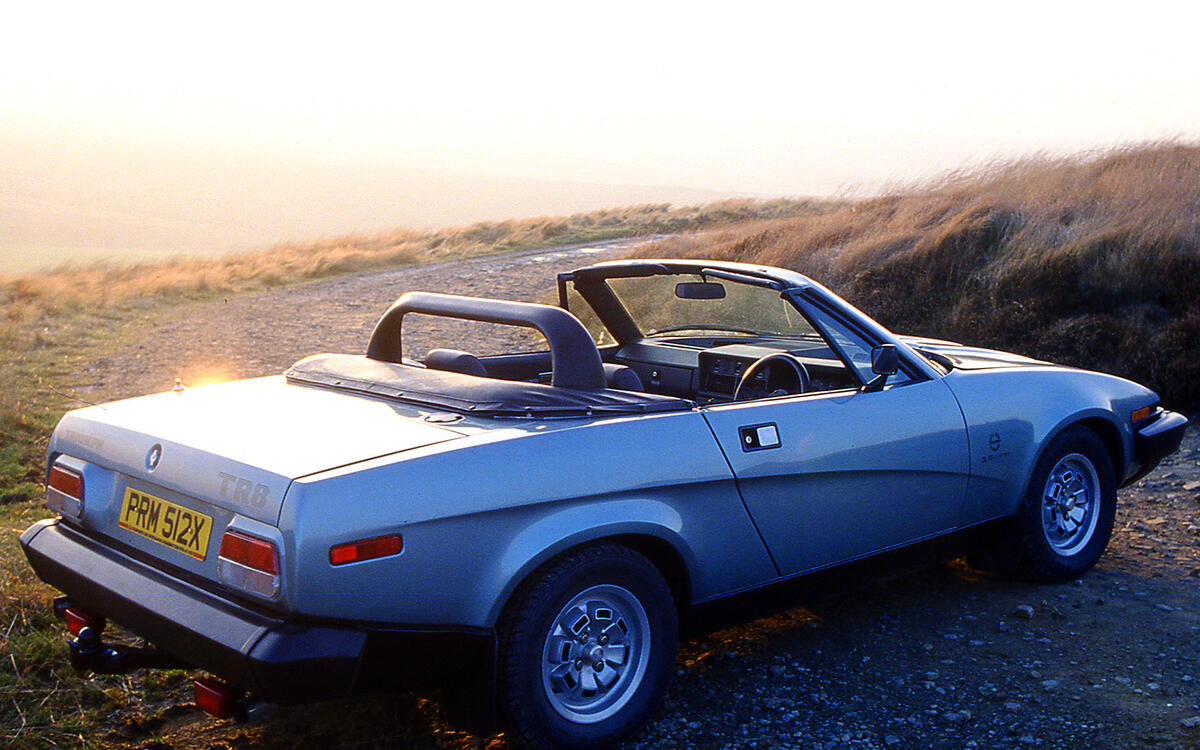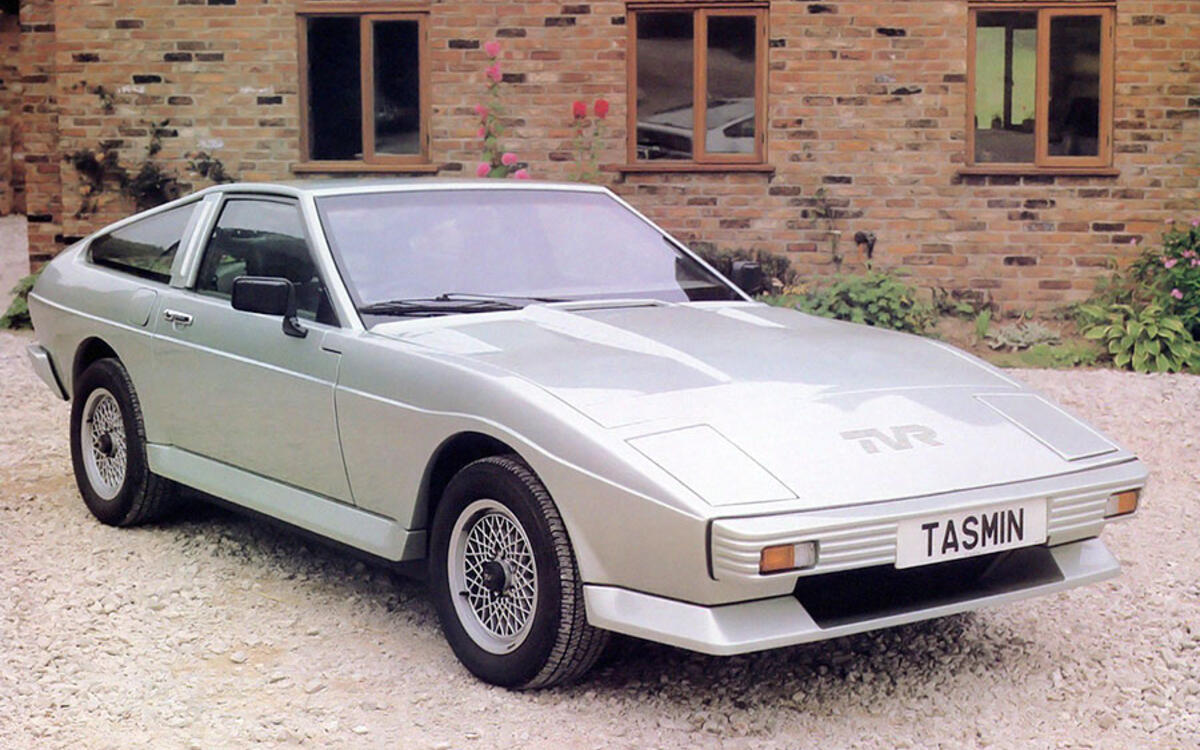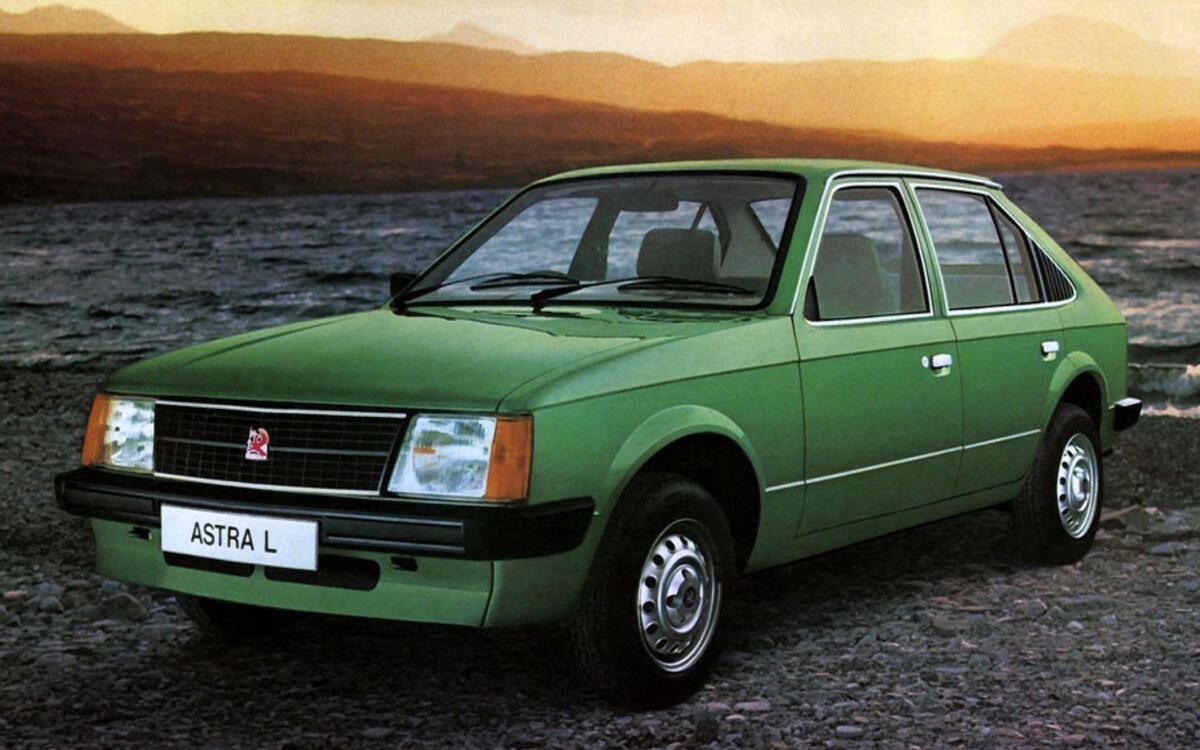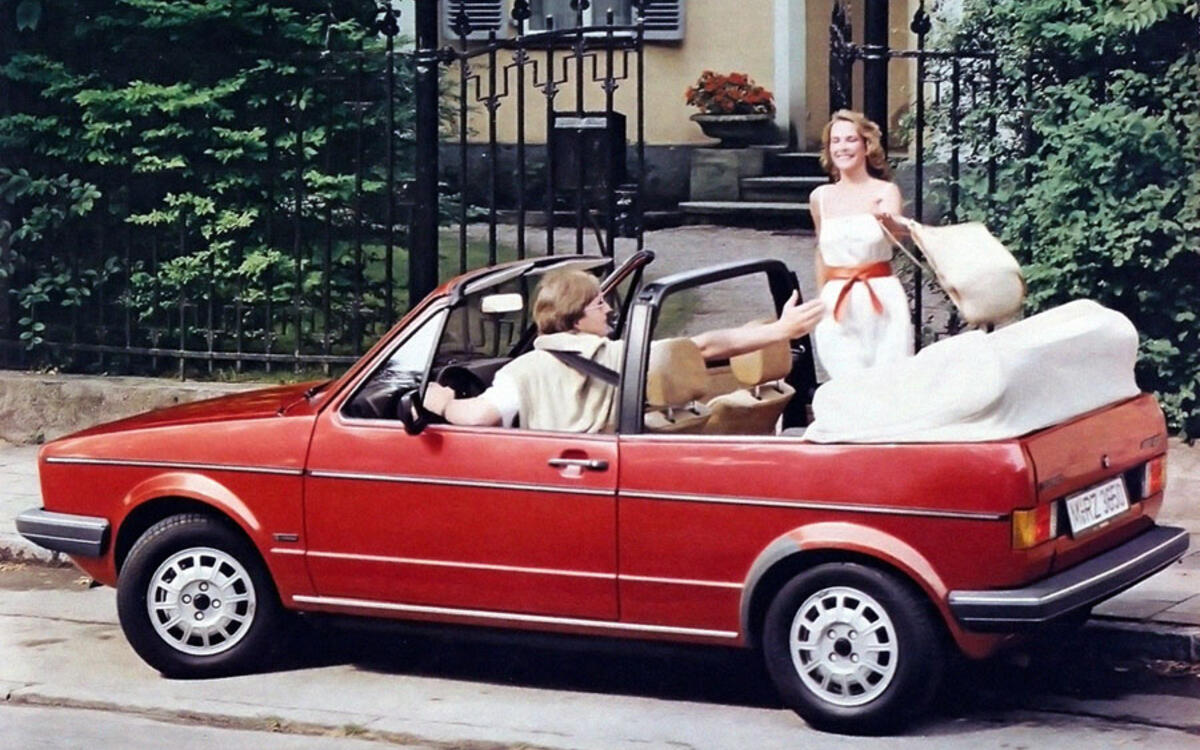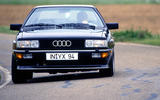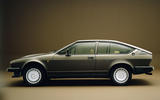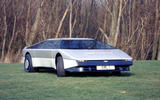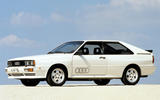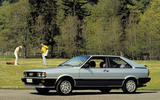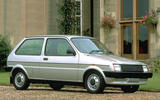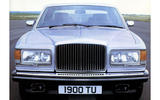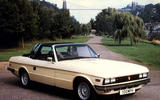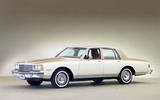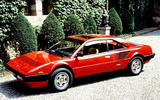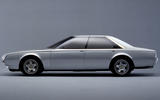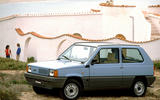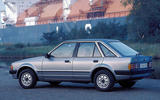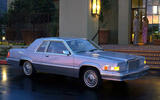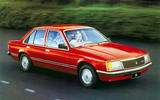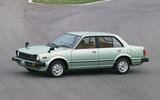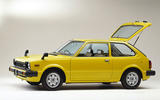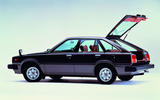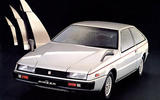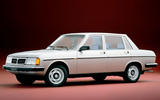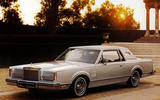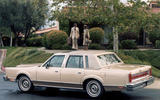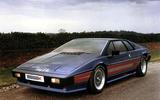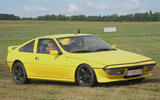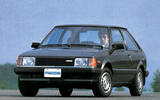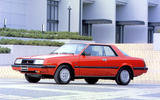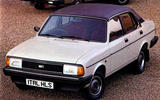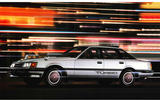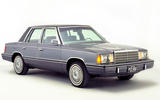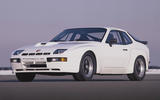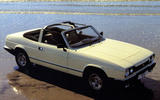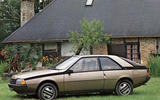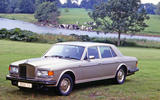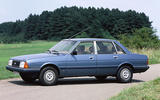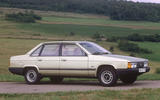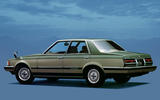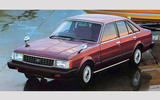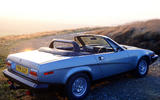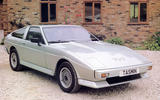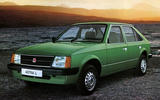 Slide of
Slide of
The Audi Quattro (pictured) was far from the only car to be launched in 1980…
The world may have been gripped by recession at the start of the eighties, but the wheels of industry were still grinding away, churning out plenty of new products. Some of it was pretty terrible (or mediocre at best), but there were also plenty of new cars to celebrate in 1980 including fresh models from Lotus, Porsche, Bentley and TVR.
Here are 40 of those new arrivals from the start of the eighties (plus an extra bonus entry for good measure) – which of these do you remember?
 Slide of
Slide of
Alfa Romeo GTV6
In 1972 Alfa Romeo launched its long-forgotten Alfetta saloon, which led to the introduction of the rather more appealing Alfetta GT coupé two years later. A full eight years after the Alfetta arrived came the GTV6, which was little more than an updated Alfetta GT with a six-cylinder engine – specifically Alfa's 2.5-litre unit, although South African buyers could purchase a 3.0-litre GTV6.
 Slide of
Slide of
Aston Martin Bulldog
Aston Martin talked of building up to 25 William Towns-designed Bulldogs. With a 700bhp twin-turbo V8, 200mph was in reach, making this the world’s fastest production road car. Then Aston changed hands and the new owners canned the project, but the sole Bulldog built survives and is currently undergoing a complete restoration.
 Slide of
Slide of
Audi Quattro
Arguably the highest-profile launch of the year, the Audi Quattro would go on to revolutionise motor sport and high-performance road cars. Its turbocharged 2226cc five-cylinder engine could take the Quattro all the way to 135mph and thanks to the fitment of four-wheel drive the power could be deployed much more effectively when things got slippery.
 Slide of
Slide of
Audi Coupé
For those who didn't need the Quattro's power – or for anyone who couldn't afford its high-profile sibling – the Coupé offered similar levels of build quality and usability. Power levels were much lower (initially just 90bhp from a 1.8-litre four-pot), but a quattro edition was available so the car could keep going when the snow hit.
 Slide of
Slide of
Austin Metro
The original Mini was a brilliant car, but by 1980 it had been left behind by a new generation of small hatchbacks that offered greater practicality for the same money. British Leyland countered with the Metro; the car that was supposed to replace the Mini, although both cars shared the same A-Series engine. The Metro proved a smash hit but the Mini in the end outlived it by a few years…
 Slide of
Slide of
Bentley Mulsanne
Once Rolls-Royce had bought Bentley in 1931, the two brands' products became increasingly similar. The Mulsanne was typical as it was little more than a rebadged Silver Spirit – but Bentley would start to rediscover its sporting mojo five years later with the introduction of the Mulsanne-based Turbo R, which at the time was the fastest posh lounge on wheels.
 Slide of
Slide of
Bristol Beaufighter
Surely one of the weirdest and visually challenging cars to ever reach production, the Bristol 412 of 1975 was designed by Zagato. Bristol tickled the 412 in 1980 to create the Beaufighter, by adding a turbocharger to the 5.9-litre Chrysler V8 to make the car searingly quick; 0-60mph in under six seconds was pretty swift for such a generously proportioned machine.
 Slide of
Slide of
Chevrolet Caprice
Strictly speaking the 1980 Caprice was a facelift rather than a new model, but with all-new exterior panels and a new entry-level straight-six that now displaced 3.8 litres (229cu in) instead of 4.1 (250cu in), the updated Caprice was lighter, more aerodynamic and came with a more efficient engine than before.
 Slide of
Slide of
Ferrari Mondial
If there could ever be such a thing as an unloved Ferrari, the Mondial is it. Picking up where the Bertone-designed 308GT4 left off, the Pininfarina-penned Mondial featured both 2+2 seating and a mid-mounted V8 which made the packaging rather interesting. Initially that V8 displaced 2926cc, boosted to 3195cc in 1986, then from 1989 a 3405cc unit was fitted. At first only a coupé was offered, but this was joined by a cabriolet in 1984.
 Slide of
Slide of
Ferrari Pinin
In 1980 the Pininfarina design house was 50 years old, and to celebrate the occasion it came up with something rather special: a four-door saloon powered by a 4.9-litre flat-12 as seen in the contemporary Ferrari Boxer. With its flush glazing and low, squat lines the Pinin looked ultra-modern but it wasn't a runner. The Pinin would later be sold on and turned in to a runner – at vast expense.
 Slide of
Slide of
Fiat Panda
Truly a landmark car, the original Fiat Panda was a brilliant piece of design courtesy of Giorgetto Giugiaro (born 1938) and Aldo Mantovani (1927-2009) at Italdesign. Designed to be built and run for a minimal cost, the Panda featured an ingeniously practical and versatile interior while all of the glass was flat, so the windows were identical on both sides of the car. The Panda Mk1 was made for 13 years, by which point almost 4.5 million examples had been built.
A celebrated 4x4 version arrived in 1983, many examples of which can still be seen mountain-goating around mountainous parts of Europe.
 Slide of
Slide of
Ford Escort Mk3
Pitched squarely against the Vauxhall Astra/Opel Kadett, the third-generation Escort marked a step change for Ford as it finally adopted front-wheel drive. This allowed for better packaging, more secure (if less fun) handling, and the Mk3 was also the first Escort to be offered as a hatchback.
 Slide of
Slide of
Ford Thunderbird Mk8
The Ford Thunderbird was in production for half a century – from 1955 until 2005. In that time there were 11 generations and this one – the eighth – ran for just three years. Smaller than its predecessors, the 1980 Thunderbird came with V8 power as standard (255cu in/4.2-litre or 302cu in/5.0-litre); the following year a straight-six was offered for the first time in the model's history, but this failed to boost sales which is why the Thunderbird Mk9 arrived in 1983.
 Slide of
Slide of
Holden Commodore
Holden launched the Commodore in 1978 and by 1980 it was already time for a facelift. That first car had been known as the Commodore VB and it looked like an early Vauxhall/Opel Senator to Europeans; the VC took over in March 1980 and like its predecessor it came in saloon or estate forms. Powerplants ran from a 1.9-litre four-banger to a 5.0-litre V8, and with such a wide model range the Commodore cemented its place as Australia's biggest-selling car.
 Slide of
Slide of
Honda Ballade
A year after Honda revealed its original Ballade it would appear as Triumph's last ever car (the Acclaim) before the brand was mothballed. Because the Ballade didn't make it to Europe and in the US it was known as the Civic Sedan, it was developed and built largely for the home market and South Africa. Buyers could choose between 1.3 or 1.5-litre petrol engines which drove the front wheels via a five-speed manual gearbox, although an automatic was available.
 Slide of
Slide of
Honda Civic
The original Honda Civic of 1972 was a turning point for Honda, in that it was the first truly successful model from the company. So the stakes were high when a successor had to be developed; the result was a car that was bigger, more powerful, more sophisticated and more comfortable than before. As with the Ballade there were 1.3 or 1.5-litre petrol engines, and while most Civics were hatchbacks there was also a saloon and an estate to choose from.
 Slide of
Slide of
Honda Quint
Honda had a very busy year in 1980, with the Quint also making its debut – although outside its home market this five-door hatch was known as the Quintet. Effectively a scaled-up Civic, the Quint came only with a 1.6-litre petrol engine that drove the front wheels via a five-speed manual transmission. Now all but forgotten, the Quint remained in production until 1985, when the Integra/Concerto took over.
 Slide of
Slide of
Isuzu Piazza
Another one of those cars that received lukewarm reviews when new, and which has now passed into folklore as one of the all-time great/terrible lame ducks, the Isuzu Piazza is now sought after for its eighties Japanese kitschness. First seen as Italdesign's Ace of Clubs concept in 1979, within a year the Piazza was in production virtually unchanged. Initially the chassis couldn't cope with the (rather meagre) power on tap, so Lotus was called in to fix things – to great effect.
 Slide of
Slide of
Lancia Trevi
Lancia launched its front-wheel drive Beta saloon in 1972, to great critcal acclaim. With its wind-cheating shape and gutsy twin-cam Fiat engines the Beta would later come in coupé, spider and HPE (shooting brake) forms. Then came the final edition, the Trevi, a three-box saloon which replaced that original model with its hatchback silhouette. Still offered with four-cylinder twin-cam engines, the Trevi came with one of the maddest dashboards ever – that alone was enough to put off many potential buyers.
 Slide of
Slide of
Lincoln Continental
The first Lincoln Continental was launched in 1940 and it's still being built in tenth-generation form, albeit with a couple of breaks along the way. It was the sixth-generation Continental that arrived in 1980, significantly smaller than before in a bid to hit fuel economy regulations of the day – but power was still courtesy of a V8 (302cu in/4.9 litres or 351cu in/5.8 litres). Both were rated at just 140bhp though, ensuring those powerplants were as unstressed as they come. Production lasted until 1983, when the Continental MkVII arrived.
 Slide of
Slide of
Lincoln Town Car
Another long-time staple of American car price lists, the Lincoln Town Car went on sale in 1980 and remained in production for the next 31 years. The first-generation edition lasted for the first nine years of that, in four-door saloon form for most of it thanks to poor sales of the two-door coupé that had been offered for the first two years. Closely related to the Lincoln Continental, all Town Cars were powered by a 302cu in (4.9-litre V8).
 Slide of
Slide of
Lotus Esprit Turbo
The impossibly rakish Lotus Esprit arrived in 1976 in Series 1 form but for many, it was the Series 3-based Turbo of 1980 that was the definitive version of this Giugiaro-designed masterpiece. Until Peter Stevens redesigned the Esprit in 1987, all of these cars had a mid-mounted 2.2-litre four-cylinder engine which in the case of the Turbo was enough for a 152mph top speed along with 0-60mph in just 5.5 seconds.
 Slide of
Slide of
Matra Murena
The French love to do things differently and nowhere is this more apparent than with the Matra Murena, a mid-engined, glassfibre-bodied sports car that featured three seats abreast. In the middle was a four-cylinder engine that displaced either 1.6 or 2.2 litres and by the time production was halted in 1983, a hefty 10,680 Murenas had been made.
 Slide of
Slide of
Mazda 323
Long forgotten by many today, the 323 was Mazda's first car to feature a transversely mounted engine and front-wheel drive. Admittedly both of these features had been widely used elsewhere for most of the seventies, but better late than never. In some Asian markets these cars were sold with Ford badges, but for most global markets the car was marketed as a Mazda.
 Slide of
Slide of
Mitsubishi Sapporo
The Sapporo doesn't enjoy quite as high a profile as the Audi Quattro. In fact this neatly designed four-door saloon and two-door coupé is long forgotten now that survivors have all but disappeared. Derived from the contemporary Galant saloon (later editions would be called the Galant Sapporo), all Sapporos came with a 2.0-litre twin-cam petrol engine which in EX form featured a turbocharger to give 170bhp – which the unsophisticated chassis struggled to rein in. Records suggest just two survive on British roads today.
 Slide of
Slide of
Morris Ital
A landmark car if ever there was one, the Ital had it all: Italdesign style, pedigree, a brilliant chassis and performance galore. Oh hang on – sorry – we're thinking of something completely different. Derived from the Morris Marina that made its debut in 1971, base editions of the Ital featured a 1275cc version of the ancient A-series engine, while posher models got a 1.7 or 2.0-litre O-Series unit. At least the home market didn't have to put up with the 1.5-litre diesel unit that was offered for export.
 Slide of
Slide of
Nissan Leopard
Eighties Japanese cars have become very collectible, and who wouldn't want one of these in their garage? Nissan's take on the personal luxury car formula, the Leopard came in coupé or saloon forms, initially with 2.0 or 2.8-litre straight-sixes, or a 1.8 four-pot for those on a tighter budget. Later would come turbocharged six-cylinder powerplants. Production ran until 1986, when the second-generation Leopard was introduced.
 Slide of
Slide of
Nissan Laurel
Some countries (such as the UK) didn't get the Nissan Leopard; instead we got the Laurel which was similarly sized but less interesting technically. In export form the Laurel got a straight-six as standard, in either 1998cc or 2393cc guises; four-cylinder units were offered in Japan, and for some markets there was a 2.8-litre six-pot diesel. There were three generations of Laurel before this one and four more came after, but the model is now largely forgotten in most countries.
 Slide of
Slide of
Plymouth Reliant
The Chrysler K-Series models (Dodge Aries and Plymouth Reliant) haven't gone down in history as landmark cars – well not for good reasons anyway. Developed on a shoestring, Chrysler was on the verge of bankruptcy when the Aries and Reliant entered production, and while sales were slow initially, things improved to the point that the two models became quite a money spinner for Chrysler, which kept them in production until 1988.
 Slide of
Slide of
Porsche 924 Carrera GT
The Porsche 924 made its debut in 1976, and over the next dozen years ever more capable variations on the theme emerged. Perhaps the most exciting though – and among the rarest – was the Carrera GT. Porsche had revealed a 924 Turbo in 1978; two years later came the 924 Carrera GT with its fat wings, an intercooler, plus a raised compression ratio to give 210bhp. To comply with Group 4 homologation rules 406 examples were made, including prototypes.
 Slide of
Slide of
Reliant Scimitar GTC
The original Reliant Scimitar of 1964 was a neat enough coupé, but what really put the brand on the map was reworking by designer Tom Karen (born 1926) to create the Scimitar GTE shooting brake in 1968. It took another dozen years for the next step, and that was a four-seater cabriolet called the Scimitar GTC. Powered by Ford's 2.8-litre V6 Cologne engine, the GTC should have been a huge sales success, but in six years of production just 443 were made.
 Slide of
Slide of
Renault Fuego
A guaranteed entry in any book about dubious cars, the Fuego is now highly prized by those who like quirky underdogs. Based on the Renault 18, the Fuego was a 2+2 that was decently sporting in turbocharged 1.6-litre form, but the naturally aspirated 1.4-litre unit that started off the range was pretty asthmatic. European production lasted until 1986, but those lucky South Americans could buy a new one right up to 1992, by which point over 265,000 Fuegos had been made.
 Slide of
Slide of
Rolls-Royce Silver Spirit
It now looks rather dated, but the Silver Spirit was a big deal for Rolls-Royce as it was the first new model from the company in 15 years – although it was little more than a reheated Silver Shadow. The mechanicals were carried over largely unchanged, while the new bodyshell was longer, lower and heavier. Incredibly, the Silver Spirit remained in production until 1999, albeit with three facelifts along the way.
 Slide of
Slide of
Talbot Solara
Based on the Simca 1307/Chrysler Alpine five-door hatch that had been introduced in 1975 (and which scooped the 1976 European Car of the Year title), the Talbot Solara was a four-door saloon that was as uninspiring as they come. Produced with 1.3 or 1.6-litre four-cylinder petrol engines, for some markets there was a 1.9 diesel option too, featuring PSA's long-lived XUD powerplant. Production ran until 1984, when the Minx and Rapier took over, which were essentially two versions of a Solara hatchback.
 Slide of
Slide of
Talbot Tagora
The boxy Talbot Tagora saloon has become synonymous with failure in the automotive world, with fewer than 20,000 made in a three-year production run; at launch, sales projections ran at 60,000 per year. Developed by Chrysler Europe, the Tagora was an executive car with no distinguishing features whatsoever (well, not any good ones, anyway), which is why European buyers stuck with their Fords, Opels, Vauxhalls and Rovers.
 Slide of
Slide of
Toyota Cresta
At the top of Toyota's luxury saloon range was the V8-powered Century and below that came the Crown. Third in the pecking order was the Toyota Cresta, which went head to head with the Nissan Laurel, although Toyota stuck with 2.0-litre engines throughout, to comply with tax limits within its home market. Offered only as a four-door saloon, production ran until 1984 when a new Cresta arrived.
 Slide of
Slide of
Toyota Corona
The unfortunately named Toyota Corona was also known as the Chaser or Cressida depending on which market it was being sold in. Buyers could choose between four-door saloon or five-door estate variants. Those on a tight budget bought 1.8-litre four-cylinder versions, but a raft of four- and six-cylinder powerplants were available, up to a 2.8-litre straight-six.
 Slide of
Slide of
Triumph TR8
The TR7 was launched in 1975 with a disappointing 1998cc four-cylinder engine; what it really needed was more torque and a better soundtrack, like its TR6 predecessor. That finally happened in 1980, with the launch of the TR8, which was made for just a year. As a result fewer than 3000 TR8s were made, only a dozen or so of which were right-hand drive – the rest were LHD for sale in the US.
 Slide of
Slide of
TVR Tasmin
After years of producing curvy sports cars, the 1980s marked a completely new direction for TVR, which embraced wedge designs in a big way – just as they were starting to fall out of favour elsewhere. These distinctively designed wedges were called Tasmin initially, but later became known simply as 350i, 390SE, 400SE or similar, to denote the size of the Rover V8 that was at the sharp end. Some early cars got 2.0-litre four-pot or 2.8 V6 Ford engines, and a fixed-head coupé (shown here) was also offered for a while.
 Slide of
Slide of
Vauxhall Astra/Opel Kadett
Even when it was launched the Astra didn't seem especially radical in the grand scheme of things, but it was a big deal for Vauxhall as this was the company's first front-wheel drive car. As such it wasn't as much fun to drive as the rear-wheel drive Chevette, but the Astra was the right product at the right time. There were three- or five-door hatchbacks or a five-door estate, and there was a 1.6-litre diesel option alongside numerous four-cylinder petrol units.
 Slide of
Slide of
Volkswagen Golf cabriolet
The first-generation Volkswagen Golf was launched in 1974, but it took six years for an open-topped version to arrive, despite the success of the Beetle cabriolet (which was still being made in 1980). The company responsible for opening up the Beetle and the Golf was Karmann, which built the Golf cabriolet right through to 1993. By then more than 400,000 had been built and the Golf Mk3 was on sale, so for the entire duration of Golf Mk2 production, cabriolet buyers (bizarrely) had to settle for a Mk1.
If you enjoyed this story, sign up to Autocar’s newsletter for all the best car news, reviews and opinion direct to your inbox. Click here to subscribe.
Let’s turn the clock back to 1980, and discover a very big year for the world of cars including some famous new arrivals
Advertisement

